WYNDHAM CLARK
The physical and mental breakthroughs of the US Open champion



NOW IT’S JUSTIN TIME


Meet the man behind Harman’s Open triumph



FRANCISCO’S FINAL TOUCHES

Solheim Cup is taking shape at Finca Cortesin
THE PRESSURE POINTS IN ROME


No golfer feels the strain more than at the Ryder Cup






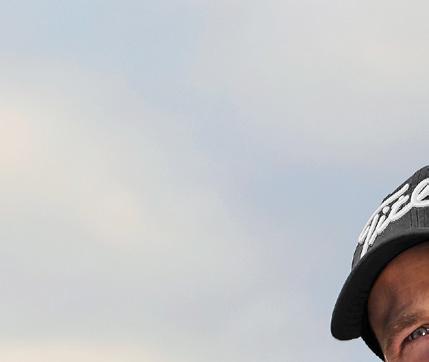
THE #1 GOLF PUBLICATION GOLFDIGESTME.COM SEPTEMBER 2023 AED20 KD1.7 OR2.1 SR20 BD2.1

•
4 Editor’s Letter
&
i sland
DP World Tour makes some sweeping, welcome changes to the 2023-24 schedule.
by matt smith
The Starter
6 La Réserve Golf Links
Mauritius’ latest addition to the golfing scene is set for a grand opening in December.
by matt smith
Mind / Body
8 Journeys
Northern Ireland’s Tom McKibbin
with keely levins
10 Beyond the Arc College basketball star
Caitlin Clark takes to the course in the off-season.
by alex myers
14 A Coach K Speech for the Ryder Cuppers
The legendary basketball coach has some timeless advice.
by jim nantz
16 Learning Curve
Catching up with new Saudi pros Faisal Salhab and Saud Al Sharif.
by matt smith
56 Swing Sequence
Sepp Straka
by dave allen
58 Lose the Skull
How to stop thinning bunker shots.
by cj nafus
60 Make Chipping Easier
Use your hybrid like a putter from tight lies.
by alana swain
62 Meet TaylorMade’s 2023 P·790 irons
4G irons continue trend of high-speed face flexing and a progressive approach to forgiveness.
by mike stachura
64 What’s in My Bag
Rose Zhang with e michael johnson
SEPTEMBER 2023
66 Trevino Taught Me
How to Yo-Yo Tips from my true wedge hero.
by jerry tarde
Features
18 Coach Trip
Meet Justin Parsons, the man behind the rise of Open Champion Brian Harman.
 by matt smith
by matt smith
COVER STORY
24 Stop Playing Swing and Start Playing Golf by wyndham
clark
36 The Gain in Spain
Finca Cortesin gets in new shape for the Solheim Cup.
 by matt smith
by matt smith
40 No Pressure
The science of remaining calm at the Ryder Cup.
by luke kerr-dineen
48 When in Rome
My love affair with golf in the land of Michelangelo. by roland
merullo
september 2023 golfdigestme.com 3 marco simone: stuart franklin/getty images
parsons
harman:
ea
s
NEW GROUND
cover photograph
Marco Simone Golf & Country Club just outside Rome is set for Italy’s first ever Ryder Cup.
by stephen denton
A whole new World
The DP World Tour has taken the bold and welcome step of shaking up the 2023-24 schedule, with significant changes for UAE fans
By Matt Smith
It may only be September, but we have already seen the global golfing landscape change so much in 2023 that it is almost unrecognisable to the traditonalists.
LIV Golf is forging ahead with its plans for next season in the midst of a potential partnership deal with the PGA Tour. The Asian Tour continues to climb to new heights with more and more big names playing on its elevated International Series events. The Ladies European Tour and LPGA have been showing the boys how things can be done amicably as players from both sides of the pond are free to compete on multiple tours and series at the same time — including the Aramco Team Series and competitions such as the innovative co-sanctioned ISPS Handa World Invitational in Northern Ireland.
Of course, the PGA Tour has been evolving on almost a weekly basis as it adapts to keep up with the changing landscape that the emergence of LIV Golf has created in the men’s game.
However, one of the most significant changes of note in recent times — especially for people in this part of the world — has come on the DP World Tour, which recently announced its new-look schedule for 2023-24.
Front and centre of the major shakeups is the UAE — now considered by many as the tour’s ‘home’ — with at least five events scheduled for the upcoming season (there are three TBA slots on the calendar as of now).
Following the traditional early-campaign events in Australia, South Africa and Mauritius before the Christmas break, the Tour rolls into the UAE in January for a revamped triple-header — but notably, no Abu Dhabi Championship (don’t worry, fans, more on that later).
The biggest change at the start of the year is a new arrival in the form of the Dubai Invitational which will be hosted at Dubai Creek Golf and Yacht Club Resort from January 11-14, with prize money of $2.5 million.
It is great to see Dubai Creek back on
the circuit after a prolonged absence — the club hosted the Dubai Desert Classic in 1999 and 2000 on the old European Tour, and the iconic course with its stunning clubhouse will be a welcome addition to the programme.

Speaking of the Classic, the 35th iteration of the Rolex Series event will occupy its traditional spot (January 18-21), with $9 million up for grabs and a host of stars hunting the crown Rory McIlroy won in dramatic fashion and horrendous weather earlier this year. The Ras Al Khaimah Championship at Al Hamra Golf Club rounds out the triple-header at the end of January.
In another welcome revamp to the calendar, expanding the DP World Tour across the Middle East, Bahrain will be joining the fold from February 1-4, as the Royal Golf Club will welcome some of the world’s top players to the resort, south of Manama, with a purse of $2.5 million.
Fast-forward to the end of the year and we have the one of the most significant changes to golf in the UAE in recent times as the Abu Dhabi Championship has been moved from its traditional January spot to form a season finale play-off along with the DP World Tour Championship.
Running in November, these two final Rolex Series events of the season with have a whopping pool of $19 mil-
E EDITOR’S LETTER
dhabi hsbc championship: luke walker/getty images 4 golfdigestme.com september 2023
abu
lion in prize money in a remodelled season conclusion. The AD Champ will welcome the leading 70 players on the Race to Dubai Rankings to Yas Links, before a trimmed-down top 50 head back to Dubai for the showdown at Jumeirah Golf Estates, where the DP World Tour’s No. 1 will be crowned.
Before all that, though, we are in ‘Team’ mode for September as the Walker Cup takes place at St Andrews before the Solheim Cup heads to Finca Cortesin in Spain (September 22-September 24), and the men get their turn in the Ryder Cup at Marco Simone Golf & Country Club in Rome.
The 20 amateurs are set for the amateur appetiser in Scotland where Great Britain & Ireland host the recently dominant Americans. Suzann Pettersen’s European ladies are looking strong for their defence of the Solheim on home soil, with the likes of in-form Celine Boutier and Maja Stark joining old heads such as Georgia Hall and Anna Nordqvist in a balanced-looking side.
On the visitors’ roster, Stacy Lewis certainly has the stardust with in-bloom youngster Rose Zhang joining AIG Women’s Open champ and world No. 1 Lilia Vu, world No. 2 Nelly Korda and US Open winner Allisen Corpuz. Megan Khang could prove to be their trump card as Miss Consistent — a T-9 at the Chev-
moving ahead
The Abu Dhabi Championship at Yas Links is moving to November on the DP World Tour calendar

editor-in-chief Obaid Humaid Al Tayer
managing partner & group editor
Ian Fairservice
editor Matt Smith
art director Clarkwin Cruz
editorial assistant Londresa Flores
instruction editors Conor Thornton, Scott Edwards, Alex Riggs
chief commercial officer
Anthony Milne
publisher David Burke
general manager - production

S. Sunil Kumar
production manager Binu Purandaran
THE GOLF DIGEST PUBLICATIONS
editor-in-chief Jerry Tarde
senior director, business
development & partnerships
Greg Chatzinoff
international editor Ju Kuang Tan
GOLF DIGEST USA
editor-in-chief Jerry Tarde
general manager Chris Reynolds
editorial director Max Adler
executive editor Peter Morrice
art directors Chloe Weiss Galkin
managing editors Alan P. Pittman, Ryan Herrington
playing editors Collin Morikawa, Jordan Spieth, Bubba Watson
ron Championship and Amundi Evian Championship, alongside a T-3 at the KPMG Women’s PGA Championship.
This one is gonna be close.
While the Ryder Cup teams go through their final touches, it could prove to be a slugfest between the big guns, with Rory McIlroy, Jon Rahm and BMW Championship winner Viktor Hovland in the blue corner against Scottie Scheffler, Xander Schauffle, Patrick Cantlay and (possibly as it stands) Brooks Koepka in the red corner.
Perhaps the biggest worry for Team USA and Zach Johnson is Justin Thomas, who has had a torrid year but is one of the best match-play players in the world.
For Team Europe, their weak point could be the final four, where things look a little shaky, with question marks over the form of the likes of Sepp Straka, Victor Perez and Adrian Meronk.
I’ll wait to see how this one pans out as it could go either way, and that home crowd in Italy could well be the 13th man Team Europe needs.
Email: motivate@motivate.ae
abu dhabi 14th Floor, Office 1406, Makeen Tower, 9th Street, Al Zahiyah, PO Box 43072, Abu Dhabi, UAE
Tel: +971 2 677 2005; Fax: +971 2 657 3401
Email: motivate-adh@motivate.ae
saudi arabia Regus Offices No. 455 - 456, 4th Floor, Hamad
Tower, King Fahad Road, Al Olaya, Riyadh, KSA
Tel: +966 11 834 3595 / +966 11 834 3596
Email: motivate@motivate.ae
london
Motivate Publishing Ltd, Acre House, 11/15 William Road, London, NW1 3ER, UK
Email: motivateuk@motivate.ae
matthew.smith@motivate.ae @mattjosmith / @golfdigestme
GOLF DIGEST and HOW TO PLAY, WHAT TO PLAY, WHERE TO PLAY are registered trademarks of Discovery Golf, Inc. Copyright © 2021 Discovery Golf, Inc. All rights reserved. Printed in the U.S.A. Volume 72, Issue 2. GOLF DIGEST (ISSN 0017-176X) is published eight times a year by Discovery Golf, Inc. Principal office: Golf Digest, 1180 Avenue of the Americas, New York, N.Y., 10036. Discovery Golf, Inc.: Alex Kaplan, President & GM; Gunnar Wiedenfels, Chief Financial Officer. Periodicals postage paid at New York, N.Y., and at additional mailing offices.
office Media One Tower, PO Box
UAE
+971
Fax: +971
media city SD
Tel: +971
Fax +971
head
2331, Dubai,
Tel:
4 427 3000;
4 428 2266 dubai
2-94, 2nd Floor, Building 2, Dubai, UAE
4 390 3550;
4 390 4845
golfdigestme.com /GolfDigestME september 2023 golfdigestme.com 5
More in Réserve on DPWT



The DP World Tour 2023-24 calendar will include a new-look tropical paradise at La Réserve Golf Links in Mauritius this winter
One of the most intriguing changes to the DP World Tour 2023-24 calendar — outside of the UAE shake-ups — was the announcement that La Réserve Golf Links will make its international bow when it hosts the AfrAsia Bank Mauritius Open on the DP World Tour from December 14-17.

This is a course so new it has yet to open, and the Mauritius Open will act as a curtain-raiser of sorts for the only contemporary links in the Indian Ocean.
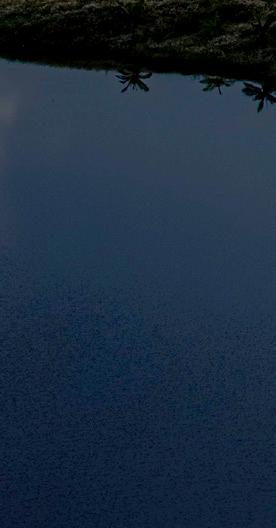
There are some big names attached to the project, as it has been co-designed by 2010 Open champ Louis Oosthuizen and top architect Peter Matkovich for Heritage Resorts, and will sit alongside Le Chateau course in the south of the island.

Inspired by the wild open spaces of the great coastal links, La Réserve has been created with nature in mind as it sits alongside a Unesco Biosphere Reserve. Former sugar cane fields have been replanted with native grasses to create rich rolling grasslands, encouraging ecological diversity. The members-only club features views of the Indian Ocean, with elevated tees and greens providing plenty of shot-making opportunities. But it can bare its teeth too. “It’s a challenging course and not for the faint-hearted,” said Oosthuizen. “We’ve worked with the land to create a course that plays in the traditional links style, with running fairways, pot bunkers and long grasses.”–matt smith

6 golfdigestme.com september 2023
Mauritius
La Reserve Golf Links
 photograph by jacob sjöman
photograph by jacob sjöman
‘I’m the Youngest Northern Irishman to Win Since Rory’
We’re from the same club, too. I get the comparisons, but I need to block them out to play my best
By Tom McKibbin, with Keely Levins
Gr owing up in Northern Ireland, it was easy to idolis e Rory McIlroy. He and I grew up at the same club, Holywood, and it’s no surprise he’s the player I look up to the most. When I was 13, I got to play with him. I was overwhelmed with nerves and excitement. We got out on the course, just the two of us, and I started to feel comfortable. He was hitting the kinds of shots you dream about, one after another. I was young, so of course I went home and told everyone I got to play with Rory. We’ve played a lot since then.
I started playing golf when I was seven. My friend and his dad were going to the driving range and asked me to come along. I’d been but said yes. I became obsessed. I loved how there is no one to blame but yourself for a bad shot. No one in my family played golf, but my parents knew I was serious. They got me lessons with Johnny Foster, who is still my coach.
TOM MCKIBBIN DP WORLD TOUR AGE 20 LIVES BELFAST, NORTHERN IRELAND
to be better. I started eating protein bars and drinking water on the course. His advice was never anything too complicated, but those little things added up.
● ● ●
Any time Rory and I are in the same area, we try to get a game in. It has been a good way for me to see how far my game is from the next level. Right now, the biggest difference is that Rory is a more consistent ballstriker. I’m still mastering that. Playing with Rory is a lot more relaxed than you might think. Even when I played with him before the Masters a couple years ago, he was good fun. We chat, he puts on some music, we get a group and play four-ball matches. It’s a lot like playing with your friends, except the way he hits the ball is unlike anything I’ve ever seen.
● ● ●
At the end of the 2022 Challenge Tour season, I was 10th on the points list and got my DP World Tour card for 2023. When you’re young and not too strong, you use your hands more than you should to manipulate the clubface. For me, that created a big draw. It got me in some tricky situations, so I switched to a fade. Getting stronger in the gym helped me use my body more instead of my hands, which naturally led to the fade. It took a couple of months to make the change, but it’s all I play now.
● ● ●
● ● ●
When I was nine, I played in tournaments against older kids on longer courses and got beat a lot. Then I played in a US Kids event in Ireland on a shorter course against kids my own age. I started to play more of them because they helped my game. I learnt how to make birdies and shoot under par. I learned how to win.
● ● ●
My dad cycled competitively. His knowledge of sport has helped me. When I was 12, I’d have a chocolate bar and a fizzy drink on the course like most kids, but he saw an opportunity for me
I won a few big junior tournaments, including the Junior Honda Classic and the Sage Valley Invitational. People started comparing me to Rory. I get it. We’re from the same club, but I do my best to not pay attention to what people write and say about me. I try to be levelheaded and not get too pumped up or too down. It keeps me comfortable, which is how I play my best golf.
● ● ●
I was supposed to attend the University of Florida, but then the pandemic hit, and I decided not to go. Turning pro felt risky, but being a professional golfer is all I’ve ever wanted to be, so I went for it. My parents were completely supportive. I knew I could get my game to where it needed to be, in part from playing with Rory.
I see Johnny four times a week. We do a lot more on-course work now— everyone should. On the course, you get imperfect lies, which you need to practice. You also learn how to deal with intimidating shots. Johnny comes to tournaments on Thursday and Friday instead of practice days. I want him to see what’s going on instead of me giving him feedback that might be clouded by one bad shot.
● ● ●
In June, I won the Porsche European Open. I’m the youngest Northern Irishman to win on the DP World Tour since Rory. Going into the final round, six of us were tied for the lead. I had a one-shot lead on 18. I had to hit my approach around a tree, knowing that if it turned over it would be fine. I hit a bigger curve than I intended, and it rolled to about 15 feet from the hole. It’s such a cool shot to be able to watch over and over. When I tapped in to win, it was a moment that I’ve dreamed of since I was a kid.
MIND / JOURNEYS
M PHOTOGRAPH BY PERRY OGDEN
8 golfdigestme.com september 2023

Beyond the Arc
University of Iowa women’s basketball star Caitlin Clark believes playing golf has helped her on the court
 By Alex Myers
By Alex Myers
Finkbine Golf Course sits on the western edge of the University of Iowa campus, a few hundred yards from CarverHawkeye Arena. Tee up a golf ball — and get a few pavement-aided bounces through the parking lot — and one might be able to reach the school’s basketball arena with a big drive. But on days when Caitlin Clark is really cooking, it seems like she could connect the two spots with one of her jaw-dropping jump shots.
The rising senior has long had the attention of her home state, but she captivated the country last season
by leading the Iowa women’s basketball team to the NCAA championship game. More than a decade after Jeremy Lin and “Linsanity” swept the NBA, it was “Clarksanity’’ that reached its peak with a Final Four upset over undefeated defending champions South Carolina. After recording the first 40-point triple-double in NCAA tournament history in the Elite Eight, Clark scored 41 points with eight assists in the semi-final. The match-up drew better ratings on ESPN than any NBA regular-season game on the network. You don’t have to watch the
MIND / THE FRINGE
COURT TO COURSE
M
Clark spends much of the offseason playing golf in Iowa.
PHOTOGRAPH BY BILL SITZMANN 10 golfdigestme.com september 2023

Hawkeyes for more than a few minutes to see why.
The six-foot Clark is a one-woman offence, dazzling with her dribbling, passing and scoring skills. Her ridiculous range sets her apart from about any woman — or man — in the game’s history and has drawn comparisons to the way Steph Curry has revolutionised the NBA. “I would love to play him in a game of P-I-G,” Clark says of the Golden State Warriors star, one of her basketball idols.
These two sharpshooters have yet to meet but have another strong connection in their love of golf. In fact, over the summer, Clark is just as likely to be on the course as she is on the court. Just nine days after the Hawkeyes lost to LSU in the national title game, Clark shared an Instagram story from Brown Deer Golf Club with a golf emoji and two words: “So back.”
“That’s what I was looking forward to the most with basketball ending,” says Clark, who swept all the major national player-of-the-year awards. “Our coaches were like, ‘You need to get away from the gym,’ even though that’s really hard for me to do sometimes. I still want to be active and do something, so I’m going to go to the golf course.”
She spends much of her off-season at places like Brown Deer and Finkbine in Iowa City, and The Harvester Club outside of Clark’s hometown of Des Moines. She loves playing the game, but the golf course also provides a respite for arguably the most famous person in the state. Even with Iowa’s rabid football fanbase, the hottest ticket on campus is to see Clark. In March, the school had to pause ticket sales for next season’s women’s basketball games because they were in such high demand.
“You can clear your mind, do something you really love, and have the peace and quiet of just your friends around or even just yourself,” Clark says of being on the course. “I love being able to escape reality for a little bit.”
Clark, 21, showed she can draw a crowd on the course as well when she played in this year’s John Deere Classic Pro-Am. With Tiger Woods-like galleries following her every move, Clark played nine holes each alongside PGA Tour rookie Ludvig Aberg and two-time major champ and fellow Iowa
“This is a little out of my comfort zone, so I just tried to have fun with it,” Clark said afterward. “Obviously, when you get to golf with the Ryder Cup captain, not many people get that opportunity, so it’s pretty special.”
If Clark was uncomfortable on the first tee, she didn’t show it, splitting the fairway with her opening drive. Those who know her would not have been surprised. Clark’s dad, Brent, began taking Caitlin to play golf when she was around 6, and she remembers getting a set of pink-and-blue kids clubs for her eighth birthday. Although she regrets never playing high school golf—the spring season conflicted with soccer—she has had countless battles with her older brother, Blake, who played football at Iowa State.
“We get pretty competitive,” says Clark, who follows the pro game closely and fondly recalls attending three days of the 2017 Solheim Cup in Des Moines. “I love getting to do something that’s active and outside but also with the people that I love.”
Clark doesn’t maintain an official handicap but is capable of shooting in the “low 80s.” She says chipping is the strongest part of her game, but her favorite club is her “versatile” 3-hybrid, which is fitting for someone who broke a slew of 3-point records last season. She also believes playing golf has aided her basketball career.
“Something I can always improve on is my mental toughness. You have one bad shot on the golf course or on the basketball court, you gotta move on to the next,” Clark says. “Obviously in basketball I have four other girls on the court with me that I can lean on if I’m not having a good day or shooting well. If I’m on the golf course, it’s all on me.
You have to accept that not every day is gonna be great for you. That’s helped me by translating that to basketball.”

When she’s on campus, Clark plays with teammates and coaches throughout the offseason. She tries to play golf four times a week in the summer, often having to be chased off by darkness.
“We’ll be like, ‘Oh, I think we can get one more hole in,’ but then you go to the tee box and you tee off and you’re like, ‘Yep, we have no idea where the ball is,’ ” Clark says. “We’re always trying to squeeze one more in.”
Clark attributes her uber-competitiveness and much of her success to playing AAU basketball against boys through the fourth grade. By seventh grade, she was already receiving letters of interest from Division-I schools.
It’s a safe bet Clark will receive plenty of interest when she turns pro, but she will have to wait a bit longer because she wasn’t old enough to declare for the WNBA draft after her historic junior campaign, which is fine with her. She loves her teammates and coaches, she loves being a Hawkeye, and, yes, she loves her golf set-up.
“There’s this back driveway you can cut through, and you’re literally in the Finkbine parking lot. So I go work out and drive one minute over, and I’m already at the golf course,” Clark says. “It’s awesome. You can’t ask for better.”
Ask any Hawkeyes fan — Zach Johnson included — about having Clark for one more season, and they’ll say the same.
Alex Myers had a slightly lower 3-point percentage than Clark in high school.

MIND / THE FRINGE M 12 golfdigestme.com september 2023 tom pennington / getty images
native Zach Johnson.
SOARIN’ Clark led the Hawkeyes to the 2023 NCAA championship game.








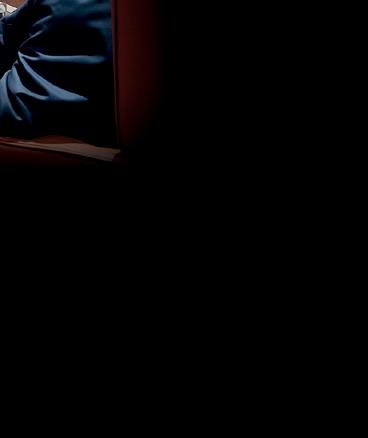




Calling all podcasters and content creators! Whether you are looking to record, edit or manage your podcast, our fully equipped podcast and video recording studio has it all. +971 4 427 3000 | podcast@motivate.ae BOOK YOUR STUDIO motivatemedia.com
A Coach K Speech for the Ryder Cuppers
The legendary basketball coach has some timeless advice
By Jim Nantz

Th ere are hundreds of examples of great leadership in golf, but one that I will long remember occurred leading up to the 2018 Ryder Cup, despite an American loss. It involved not a golfer, but the legendary Duke basketball coach, Mike Krzyzewski. “Coach K” was still coaching at the time and didn’t retire until 2022. He was invited to address the American team by captain Jim Furyk. With another Ryder Cup on the horizon at Marco Simone Golf and Country Club in Rome, Italy, the message he delivered is still pertinent and contains many takeaways that apply today.

My favourite bit of minutiae about Coach K is that he was an Army captain who served as a field-artillery liaison in Korea in the early 1970s. More wellknown is that Coach K later revived a rudderless USA Basketball programme and coached the US Olympic team to
three gold medals. Beyond the obvious achievements — five NCAA championships at Duke and 1,202 career victories, a Division I record — Krzyzewski is a patriot who has a history of handing out assists to his country.
In August 2018, Coach K phoned me after the finish of a PGA Tour playoff event and explained that Furyk had asked if he would address the team early in the week of the BMW Championship at Aronimink near Philadelphia. Coach K had enthusiastically agreed, but he wanted to know if we could review the content he had prepared to ensure that it sounded golf-smart.
It was a 45-minute call with Coach K seeking some background on the captain and players. I told him Furyk had played point guard at Mannheim Township High School in Pennsylvania and that he was a deep thinker with a dry, cutting wit. I told him how Dustin Johnson’s grandfather, Art Whisnant, had starred
at South Carolina in the early 1960s, how Tony Finau had led the state of Utah in rebounding while at West High School, and that Jabari Parker is Tony’s cousin, how Justin Thomas, though an Alabama alum, grew up in Kentucky and was a big Louisville basketball fan. Even with this insight I was impressed by how much Coach K already knew.
The talk, which he delivered during a team dinner on September 6, didn’t need much fine-tuning from me. I couldn’t help but jot down a few of the high points of the talk he delivered:
Expect a hostile environment .
Coach K warned the players that most of the crowd was not going to be pulling for them. He advised them to not overreact to anything they might hear or see. He said regardless of how intense it might get, just keep going along, lost in your own world, ignoring the noise.
Don’t check your egos at the door. When Krzyzewski coached the US Olympic teams, he dealt not with amateur college players but with professionals who have their own brands and have considerable egos. Coach K encouraged the Ryder Cup players not to scale back on that, to be who they are. He saw all the pride and ego as a positive, especially if channeled in a team-oriented way.
Feel the importance of the uniform. Coach K relayed the story of what he did with one of his Olympic teams. He told his players that when they got back to their rooms, they would find on their beds a game uniform. He told them to put it on, to experience what it felt like, to feel the symbolism and to let it sink in and get used to it.
You’re not just playing for the USA. Krzyzewski asked the players to win the Ryder Cup for themselves and each other. He said if they did that, the rest — be it an Olympic gold medal or the Ryder Cup — would take care of itself. In his mind, it was all about the team and taking care of one another.
A harsh truth about golf is that you can’t play defence as in basketball. The United States performed well, but the Europeans were unstoppable and won that Ryder Cup. His advice remains timeless, much like Coach K himself.
MIND / THE VIEW FROM PEBBLE BEACH PHOTOGRAPH BY NEIL JAMIESON M
Jim Nantz predicts a bright celebrity golf future for Duke alum and former NBA star Grant Hill.
14 golfdigestme.com september 2023











FOR EVENT SPONSORSHIP, TABLE BOOKINGS AND GENERAL ENQUIRIES mario.saaiby@motivate.ae | taran.singh@motivate.ae | eisha.khan@motivate.ae Presented By Vote Processing Partner Media Partner Beverage Partner #WOAwards WhatsOnKSA WhatsOnSaudiArabia.com BOOK HERE VIEW HERE
Learning curve


Saudi duo Faisal Salhab and Saud Al Sharif reflect on their first year as golf professionals — and hint at what lies ahead




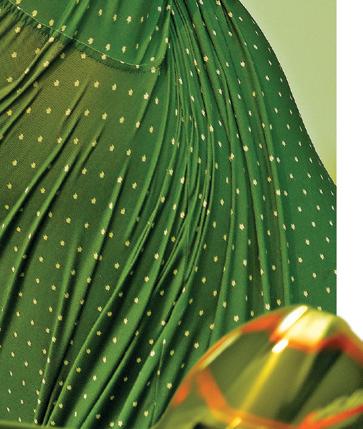
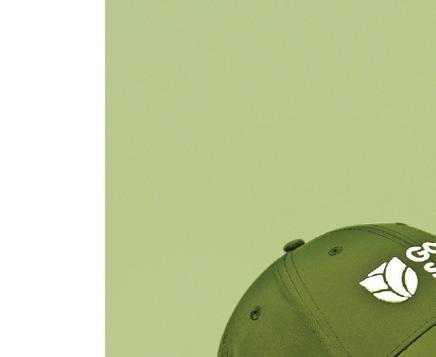


 By Matt Smith
By Matt Smith
MIND / LIFE ON TOUR M 16 golfdigestme.com september 2023
PHOTOGRAPHS BY PAUL LAKATOS/ASIAN TOUR
At the beginning of the year, two of Saudi Arabia’s emerging golf stars took the life-changing decision to go professional at the PIF Saudi International.
Now, with a number of events under their belts, including the Asian Tour International Series, both Faisal Salhab and Saud Al Sharif took time out to speak to Golf Digest Middle East about their progress on tour among some of the best players in the world.
Q: Can you describe both what is similar — and what is different — about your lives in general now you are professional?
Faisal: I’m very lucky to have teammates that share the same schedule, so it still feels like we get to share moments and learn from each other and help each other as well. It is a lot more than the independent “You eat what you kill”, and I am very fortunate to have support from Golf Saudi.
Saud: The similarities I think have been there since amateur days as Faisal and I travelled the world together competing on international stages, and that hasn’t changed yet, thankfully. We have built a brotherhood relationship for years and years to come.
Q: When you reflect on your introduction to golf, at what point did it become your aspiration to turn professional?
FS: When I first joined the national team. The more tournaments I competed in, and the exposure I got to the game, the more my aspiration to grow to progress in the game. As a kid I always used to watch golf on TV. I stayed up at night to watch all the majors and I found the players inspiring, hoping to be like them one day.
SAS: Ever since I got introduced to the game from the age of 10 I knew I had the potential to work hard and be the best version of myself on the golf course and outside, so to myself it was clear ever since the get-go.
Q: What advice would you give an aspiring young golfer, especially in a market in Saudi Arabia where the sport is yet to be fully established?
FS: Luckily in Saudi there are a lot of great programmes that are being established to fully support the next gen-
eration of golfers. My personal advice is to start with no expectations, enjoy the game, and when you feel like you’re ready to take it to the next level, there will be the right support system.
SAS: My advice will be no matter where you are or what your resources are with determination and a dream comes a bright future, and that comes with loving what you do and being able to go that extra mile each day for it.
Q: Aside from golf, how do practice weeks differ from tournament weeks?
FS: The weeks that are just practice, I usually go to the gym, play some other sports and try to generally stay active and healthy.
SAS: I try to keep my technical in check on off weeks with Jamie [McConnell], and still challenge myself in that pressured atmosphere of a golf tournament even in practice with drills, you have to practise under pressure to be able to perform under pressure.
Q: What challenges do an international schedule present for travelling tour professionals? In particular, how do you manage your health and fitness?
FS: I am still learning how to cope and deal with all the travel, as at times it can be a bit overwhelming. Even when I was an amateur we would play on schedules that expected us to travel a lot. Having those teammates that travel and have the same schedule as you make it less lonely and we can rely on each other, some people are more organised than others.
SAS: I try to make sure I tick a lot of boxes when it comes to nutrition, make sure I consume enough calories when travelling and obviously staying hydrated is key.
Q: How do courses and conditions differ around the world where you have competed? Is it important to you to play in other regions? If so, why is that?
FS: Different regions have different types of golf courses. Some courses are tighter than others, and weather can play a role as well. That is why it’s important to play on different courses to challenge myself.
SAS: It is important by all means. To be a complete global-performing professional you have to develop that skill of
being able to perform under any given circumstance, rain, wind, hot, humid and different ground surfaces around the world, and luckily the busy worldwide schedule we have presents us with these different playing conditions to be able to learn from.
Q: How significant is The International Series to you when setting your schedule?
FS: They are the biggest events in my schedule. I always want to be playing at my best during those weeks as they are largest events on my circuit and have the highest quality field and the points are very meaningful towards gaining a full card.
Q: What has been your impression of International Series events so far and which events, if any, are you looking forward to?
FS: Overall, they are very well organised, courses and locations are great. The facilities are well prepped.
SAS: Again, The International Series is the platform for us right now to make strides towards our golf games, and it helps bring out the best of our golf. The addition of the St Andrews Bay Championship is extremely cool.
Q: What is your proudest moment in golf since turning professional and why?
FS: Turning professional in Saudi Arabia is definitely my biggest highlight, and one of the proudest moments was grinding it out in Oman, at the first International Series event of the year, to make the cut on a tough course.
SAS: Probably making my first cut back in February this year at International Series Qatar, with it being my second tournament as a pro, and being in the lead during round one too was indeed a proud moment.
Q: What targets have you set yourself for the remainder of 2023? And beyond?
FS: For 2023, with the remaining events that I have is to settle myself as a professional and make cuts and strive for bigger goals as I achieve my steppingstone goals.
SAS: I am optimistic, feel like it will be good year to hopefully take as a learning experience, and am confident that I will be successful in some events. Who knows?
september 2023 golfdigestme.com 17
Coach trip
SPEAKING WITH JUSTIN PARSONS ABOUT HIS JOURNEY FROM NORTHERN IRELAND AND THE UAE TO THE US AND OPEN CHAMPIONSHIP GLORY WITH BRIAN HARMAN AT HOYLAKE

 BY MATT SMITH
BY MATT SMITH
18 golfdigestme.com september 2023
To paraphrase the famous saying somewhat: Behind every great golfer is a great coach. Just ask any of the pros who have sought the guidance of the likes of Hank Haney, Sean Foley, Peter Cowen or anyone with the last name Harmon.
These are the men who live away from the spotlight, working on the sidelines to ensure their pupils are ready and able to give their best when they step on to the fairways.
Now there is another name you can add to the list of coaching greats who helped make waves at the Open Championship at Royal Liverpool last month.
American pro Brian Harman left all trailing in his wake in Hoylake, storming to a six-stroke victory, showing nerves of steel in front of a hostile English crowd, and put on a putting masterclass in some seriously nasty British weather.
Cradling the claret jug on the Sunday, Harman, who has a Ryder Cup to look forward to next month, was the first to admit this was far from a one-man show, and thanked his family and team, including coach Justin Parsons.
The 36-year-old has been working with Parsons since 2019, taking over from the late Jack Lamkin, and years of hard work eventually bore fruit with Harman’s third pro win and their first together (he had previously won the John Deere Classic in 2014 and the 2017 staging of the Wells Fargo Championship).
Speaking in the 100th edition of Golf Digest Middle East back in 2017, Parsons said: “I would love to think in nine years’ time I have helped a player to achieve a major championship victory.”
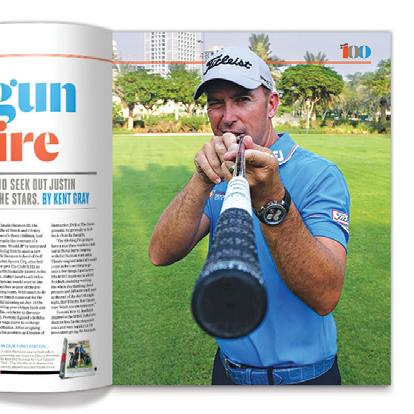
He did it in six.
“No disrespect to the fact I get pleasure from helping you strike a seven iron better
or whatever, but I think professionally what really thrills you the most is to see someone you have nurtured come up and perform higher than they have before. That’s what Butchy [Harmon] always says to us, your biggest job when you have got a good player is: ‘Don’t screw it up.’”
Back in the present, Parsons is now an Elite Golf Instructor at The Sea Island Golf Performance Center in Harman’s home of St Simons, Georgia. But it was quite a journey for the coach to reach the top, having begun in his home in Northern Ireland before cutting his teeth in the UAE.
The UAE was certainly instrumental in getting Parsons to see the wider world of golf after first picking up a club and playing around on his local course as a kid back home.
“My late uncle had given me an intro to golf when I was about 10 or 11, but it was basically just how to hold a club,” he told Golf Digest Middle East. “It wasn’t until I was 13 that I really got into golf, when a friend asked me to play with him. We ended up playing the entire day, and from that moment on I can remember being hooked on the game. That was in the summer, and by the following year I was a competitive amateur and I went on to play in boys’ team events all over Ireland.
“I took to it very quickly, and having gone through the amateur ranks, I was teaching in Bangor when a client took me to Dubai. We played golf every day. This was around 2004 and we were up at Jebel Ali and we played there, the Montgomerie and, I think, Dubai Creek. I was just blown away by the facilities, they were just incredible.
“Even back then, Dubai felt like such a buzzing place and felt to me like a really cool place for a young person to be.

september 2023 golfdigestme.com 19 PHOTO , LEFT , COURTESY OF SEA ISLAND
SPEAKING IN THE 100TH EDITION OF GDME IN 2017, PARSONS SAID: I WOULD LOVE TO THINK IN NINE YEARS’ TIME I HAVE HELPED A PLAYER TO ACHIEVE A MAJOR CHAMPIONSHIP VICTORY
“Having met some of the club teams — I met Wayne [Johnson] while at the Montgomerie — and I decided on a wing and a prayer to head over and it all worked out. I will always be grateful to Wayne for giving me that start in 2005 and joining the team at the Monty.
“I learnt so much about the operational side of an academy. It really was an invaluable lesson in how an upscale property is managed.”
It is no understatement to say Parsons was making an impression, but even he was taken aback as his career went in a new direction.
“I rose to the position of Director of Instruction in 2007 and then came my next opportunity,” he explained. “In 2008, I was watching the FA Cup final with a few of the golfing guys in Dubai and my phone rang. I saw it was an American number so I went outside to take the call. It was Claude Harmon III — we had met a couple of times before — and he asked if would like to help him open the Butch Harmon School at the Els. I thought it was just such a great offer from the ‘First ‘Family’ of golf instruction, and immediately I told him I was interested.
“Again I was so fortunate to be working with guys in Dubai who made it fairly streamlined for me to make the move from one position to another in the UAE, which was not as common as it is now.
“I started in the late summer of that year by procuring and creating programmes and looking at who we would have on the staff. We were fortunate to have Butch come over in early 2009 and it has been a good run since and the facility has been a great success.”
As his stature grew, Parsons found himself working with professionals in Europe and the States and, with a young family in the UAE, the travel began to keep him away from home more and more.
“While I was not actively throwing my CV around, there were some who knew I would consider an opportunity in the States,” he told us. “Todd Anderson, an excellent fellow coach for the likes of Billy Horschel, had left his position at Sea Island around 2016 and there was a growing feeling that they needed someone to occupy that role of teaching Tour players and they also had plans to open the Golf Performance Center, which has become an incredible facility on par with everything in the UAE.
“Through some of the contacts in America, we had some approaches made and what it would take to come over. In the summer of 2018, my wife and I came over to the US Open at Shinniecock Hills and we combined that with a trip to St Simons and we had a good look around. It felt like a great place, not only to continue my PGA Tour work, but also to establish a home base for my wife and kids where Dad wasn’t going to be away as much. It is a beautiful island and a great place to raise the children.”
While he was thrust into the limelight somewhat thanks to Harman’s success at Royal Liverpool, Parsons had already been well established in coaching circles for many years.
“The Brian Harman adventure has been one of many,” he said. “I have helped numerous noteable players in Europe — Darren Clarke, Colin Montgomerie and I started out with David Howell and Michael Hoey back in the day — those were the guys I was regularly working on tour with. We had Will Smith and Hugh Grant out at the Els golf school, guys who are very connected to the UAE like Dwight Yorke and Brian Lara would come down too.
“It was very cool to be part of all that in Dubai, where you would see so many excel-

20 golfdigestme.com september 2023
AS HIS STATURE GREW, PARSONS FOUND HIMSELF WORKING WITH PROS IN EUROPE AND THE STATES AND, WITH A YOUNG FAMILY IN THE UAE, THE TRAVEL BEGAN TO KEEP HIM AWAY FROM HOME MORE AND MORE
lent players, stars and celebrities, and you would pick up an awful lot from them too.
“In my last couple of years in Dubai, I was helping Peter Uihlein and Louis Oosthuizen and Charl Schwartzel, and they were mainly playing in the PGA Tour, which is what took me across to the States so much. While I was there I was lucky enough to work with Michael Thompson, who had won a PGA tour event in our first year together. Then I also had Harris English, who went on a great run and won twice, which kinda led to be being on the coaching team for the United States Ryder Cup team at Whistling Straits, which was a very proud moment, if slightly strange to be on the ‘other side’ from which I have always supported.

“I am also helping Davis Love III with his swing on the Senior Tour. Interspersed with that, I have helped Seamus Power, Patton Kizzire, Ben Coles, Will Gordon, Branden Grace, so there is quite a decent list there.”



Now the Parsons family is well settled in St Simons, Justin has had time to reflect on his past life in the UAE and how things have changes for him professionally and personally.

“We do miss a number of things about Dubai, and it will always be special to me as that’s really where it all began,” he said. “There is the vibrancy of the city and the multinational dynamic, the pace we enjoyed in our twenties. Now we are in our forties, the pace here is a little slower and it gives us a chance to reflect on things. My wife teaches yoga and, looking back, Dubai has a special place in our hearts personally and professionally and we wouldn’t have done it any other way.”
CLOCKWISE FROM TOP LEFT: Coach Parsons is a regular at events where his pupils are playing; This culminated in Brian Harman landing the Open at Royal Liverpool and a welcome from Craig Allan, Director of the Sea Island Golf Performance Center
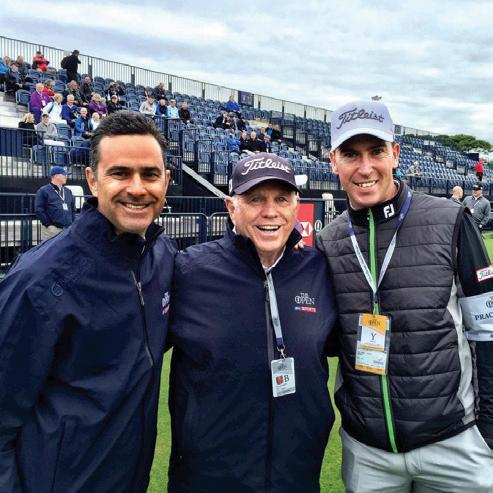

MIND CONTROL


Back to that major moment and, while Harman had not won a title since 2017, Parsons knew it was just a matter of time before things clicked and there was no need to massively change anything. All the signs were there that something special could be about to happen at the Scottish Open the week before the showdown in Hoylake.
“We met up at the Renaissance on the Tuesday, and he reacts and responds very
september 2023 golfdigestme.com 21 PHOTOS
COURTESY OF SEA ISLAND
well to links golf — the conditions are good for his iron play and I think it suits the way he putts the ball and the creativity he has as a player,” Parsons said. “As we went through the week at the Renaissance, I don’t think we changed anything. The putting system he runs remained the same, the full-swing stuff we have implemented over the past two or three years was pretty much the same. We were in a good position going into the weekend, and Rory [McIlroy] was hitting some brilliant shots in tough conditions while Brian settled for finishing eighth.
“On the Sunday before the Open, I was down at Royal Liverpool having a look at the course, looking at how it was going to play, and Brian got down after us. He took the Monday morning off and then we got down to it in the afternoon.
“It is clear that when these guys are playing well, as a coach, you need to just keep them in their process, give them assistance, answer any questions, but making sure you are not introducing anything that would lead them in the wrong direction, which can be easy to do.
“Brian, his caddie Scott, and I had some good preparation, playing nine holes in some really wet conditions. The golf course did play well for him. He is a very straight hitter, the driver can go further than others and he can challenge those bunkers and, of course his putting was excellent all week.
He got a little template that I think got him rolling the ball really well on the greens. You will notice if you look back the putts were all going in at good speed and running right at the hole.
“He did make one little change by taking ice baths up at Renaissance and he continued that at Royal Liverpool. I think that had some mental and physical benefits. We saw some great mental control from being in that lead from Friday afternoon all the way to the last hole on Sunday. He was in the lead at the Open and he controlled his mind and his expectations and his process very, very well.
“By his own admission he will say he had to control his expectations at times, and that has been part of his training over the past three or four years. That has been something we have done collectively, not only with me but with his caddie and the other people that we talk to through the years — to control a fast-moving mind — it really has been a collaborative effort.
“To see him to be able to gather all that together and play the type of golf he is capable of in his mid-thirties is really special and he joins a special club as Open Champion and if he can continue to implement the processes that he has implemented and keep himself in good shape and control that busy mind and let the talent he clearly has as a player come out, it would be no surprise to see him have a very good next three to five years.”

22 golfdigestme.com september 2023
PARSONS KNEW IT WAS JUST A MATTER OF TIME BEFORE THINGS CLICKED. ALL THE SIGNS WERE THERE THAT SOMETHING SPECIAL COULD BE ABOUT TO HAPPEN AT THE SCOTTISH OPEN THE WEEK BEFORE THE SHOWDOWN IN HOYLAKE
photo courtesy of sea island



STOP START PLAYING
SWING GOLF PLAYING

and
BY WYNDHAM CLARK
HOW THE US OPEN CHAMPION
REVERSED A PATH
SELF-DESTRUCTION to
BY DREW POWELL
PHOTOS BY STEPHEN DENTON
THERE IS A SIMPLE EXPLANATION FOR WHY
Wyndham Clark exploded into the elite echelon of professional golf in his fifth season on the PGA Tour. To understand how he won his first tour title and then the US Open in a span of six weeks and needed only six months to move from outside the top 150 in the World Ranking to inside the top 10, recall the final 20 minutes of Clark’s third round at Los Angeles Country Club.
One shot back of Rickie Fowler and playing his second shot at the 17th, Clark flared his approach right. It bounded into a penalty area, among rocks and fescue well below the putting surface. Instead of attempting the risky shot, he took a drop, chipped it to six feet and rolled in the bogey putt to fall two back of Fowler.
A hole later on the 18th fairway, with darkness approaching, Clark struck his second shot and delivered one of the most forceful club twirls in recent history. The ball finished six feet from the cup, and after curling in the left-to-right slider for birdie, Clark secured his place in the final pairing on Sunday, when he would overtake Fowler and hold off Rory McIlroy to win his first major championship.
In those 20 minutes, the 29-year-old Denver native demonstrated the composure and self-control that have been the final puzzle pieces for a player who has long had the physical skills to be one of the world’s best. That explanation, however, hardly tells the entire story.
Both of Clark’s parents, Lise and Randall, were athletes. Randall played tennis at the University of Arizona and had a brief professional career before a series of knee injuries ended his dream. Lise could throw a football with a perfect spiral and often beat her two sons, Wyndham and his younger brother, Brendan, in heated ping-pong matches.
“I would get so mad sometimes because I’d come home to find new dents in the table where they’re slamming the paddles or breaking paddles,” Randall says with a laugh. “She was super competitive. She loved trying to compete with Wyndham in whatever it was.”
Clearly those athletic genes were passed down to Wyndham. By kindergarten, he was hitting baseballs over the school, throwing footballs farther than anyone and schooling kids on the monkey bars. Golf was no different. Lise brought Wyndham to the range at age three, and he made his first hole-in-one three years later.
Paired with his natural talent was what one of his high school swing instructors, Erik Billinger, calls a “psycho work ethic”. The Clark family joined Cherry Hills Country Club when Wyndham was 11, and he would be at the course from sunrise until dinner. “It was a full-blown addiction,” Clark says. “My parents sometimes wouldn’t be up early enough to take me, so I would ride my bike. We probably lived five to
eight miles away, so not too far. I’d take the back roads, and I’d get there before anyone at 6 or 6.30am and start practising.”
Wyndham also possessed an intense competitive fire. Dad wasn’t much of a golfer, so instead of teaching his son the technical side of the game, he focused on developing these qualities. “I would always remind him, when you’re not working, there’s someone in the world that is, and he wants to kick your butt,” says Randall, who is an investor in a private equity firm. “You’ve got to decide how hard you are willing to work.”
Sometimes that competitive fire burned a little too hot. At 13 while playing in an American Junior Golf Association tournament in Aspen, Colorado, Wyndham had an outburst mid-round. He was a perfectionist and like many junior golfers, struggled to handle poor shots.

“He completely lost it,” says Randall, who took Wyndham to most of his junior golf events. “I walked up and said, ‘Shake hands with your playing partners and pick up your bag. We’re walking in.’” Randall made Wyndham apologise to the tournament director and took his clubs away for a few weeks.
Lise was a national sales director for the cosmetic company Mary Kay. Juggling work responsibilities with raising three kids — daughter Kaitlin is the couple’s eldest — Lise maintained an admirable work-life balance, often taking the kids to their sports practices and making family dinner almost
26 golfdigestme.com september 2023
BY WYNDHAM CLARK WITH RON KASPRISKE
rowing up, I played basketball, baseball, football, hockey, American football, you name it. Anything I did, the game was intuitive, and I picked it up quickly. I never got technical with those. I just played.
Same with golf. Early on, it was fun. I just played. Then, obviously, I got to a point where I needed some instruction . . . but I overdid it. I became a technical golfer, and that just wasn’t in my DNA. Before I started working with John Ellis, my coach and caddie, I saw a handful of other teachers. They were all good swing coaches, but I was so conscious of my swing that I was thinking about positions and such during my tournament rounds, and that didn’t produce
great results. My first few seasons on tour, I felt like I should have been scoring a lot better.
I have since gotten away from thinking about my swing. It took away from my natural ability to see a shot in my mind and then create it. When John and I are out on the course, we don’t want to think about anything but the next shot. John will say: “We want this one to finish here,” and I’ll be like: “Oh, OK.” That’s it.
This change in approach really helped me make this year so successful, and it could be a valuable lesson for you, too. It’s OK to think about your swing while you’re practising, even when you’re waiting to hit your next shot on the golf course. Go ahead and rehearse the positions and feels you want. But when you step in to hit the
shot, see it in your mind, and allow your natural athleticism to help create it. If I asked you to throw a ball at a target, do you think about anything but the target? I doubt it. Remember, the golf swing is no different than any other athletic motion. It’s already in you.
YOU CAN’T FIND THE MIDDLE IF YOU DON’T GO TO THE ENDS
Getting away from mechanics is a huge deal for me. It might as well be my mantra. That said, I do practise things on the range to make sure I’m dialled in. For example, getting my swing and shots back to neutral is something I work on all the time.
I’ve had weeks where I’m overcutting the ball, producing a low shot that moves too much to the right. When that happens, John will say: “Let’s hit some high draws.” That’s the opposite of that low, wipey fade, and it helps get my swing and shots back to neutral.
It’s a good strategy for you, too. Here (above left) I’m hitting a sweeping draw. If you’re someone who slices, producing this shot will do wonders for straightening out that banana ball. Feel like you’re swinging much more from inside the target line than you’re probably used to. Combine that with a closed clubface in relation to that path, and you’ll start seeing a shot shape you might fall in love with.
Whatever your typical shape, if you’re putting too much curve on the ball, it’s really hard to keep it in the fairway — so scale it back. If you start trying to curve the ball the other way when you practice and play, you’ll soon realise how to move your body and swing the club to create a more reliable ball flight. If your tendency is to try to steer the ball into play, which never works, this will free up your swing.

september 2023 golfdigestme.com 27
MY GO-TO DRILL: TEE IT UP TO FIND THE CENTRE OF THE CLUBFACE
A drill I routinely do before I play will help you if you struggle to consistently hit solid shots. I grab an iron, tee up a ball and make swings in which my goal is to strike the ball (right) and then take a thin divot after impact. The longer the iron I’m using, the less of a divot I take. When I do this drill with the driver, taking a divot is not what I’m looking for. The goal is to instead leave the tee in the ground, clipping the ball off of it.
The point of teeing the ball is to force me to shallow my path
down and through impact. If I don’t shallow out, I’ll mis-hit it. Don’t get me wrong, I’m still swinging slightly down on the ball with my irons, but it’s not a steep chop. Just like a lot of amateurs I see, when I’m playing a lot, I have a tendency of getting steeper and steeper, which produces bigger and bigger cuts. When that happens, John and I will get my swing back to neutral by working on this drill for about 15 to 20 minutes before I tee off. It’s a great reminder to get my swing back.
If you typically chop down on the ball, I bet you struggle to find the
centre of the face. You know that great feeling when the ball shoots off the club? This drill will help you do that more often. You can even tee the ball higher than I do to really force you to make a shallower swing.
To enhance this drill, put down two alignment rods in a cross pattern. One runs parallel to your target line along your toes, helping you set up correctly. The other runs perpendicular to ensure your ball position doesn’t change from shot to shot. For me, it can creep too far forward of centre. That makes it harder to get good compression.
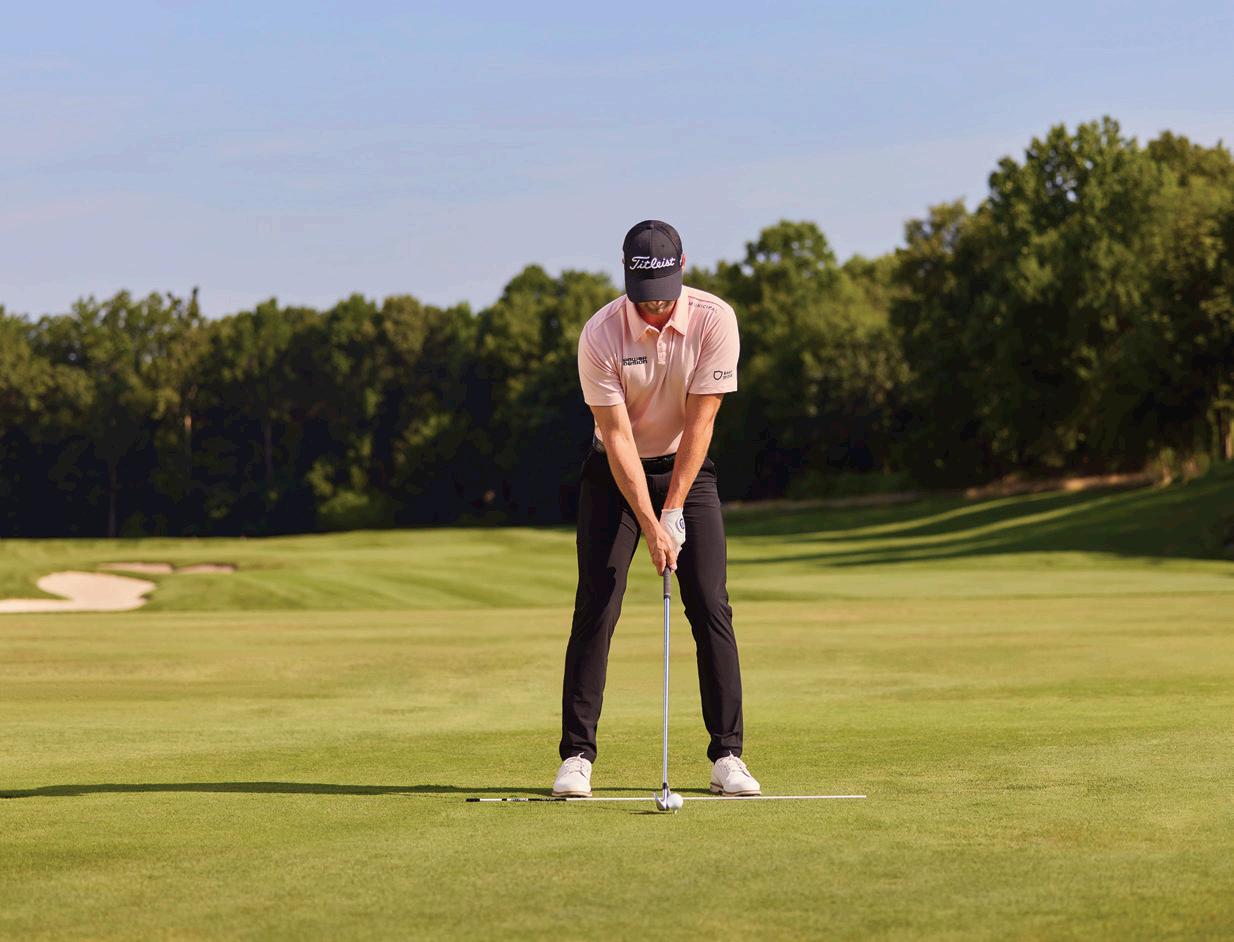
XXX GOLF DIGEST ISSUE X 2023
every night. Her barbecue ribs and brisket, slow cooked in maple beer for eight hours, were the boys’ favourite.
She was also a cheerleader for her kids, constantly showering them with positive affirmations, often in notes left in lunchboxes, backpacks or, as the kids got older, on the steering wheel. To Wyndham, Lise’s message was often just two words: “Play big,” meaning to always play for something bigger than yourself. The reminders of love and support resonated with Wyndham, a self-admitted mama’s boy. “When my mom had time for us, it was 100 per cent attention on us, and we had a close bond just because I was the first boy,” Clark says. “We would watch movies together. I’d stay up late and hang out with her. When things weren’t going good in golf, she was there to give me support and tell me: ‘Hey, it’s not everything.’ ”
Despite occasional outbursts on the course, Wyndham was laid back and outgoing off the course, says close friend Mike Schoolcraft, who grew up near Clark and was a top junior golfer as well. At Valor Christian High School, Clark had a close relationship with his sophomore English teacher, Brian Kettler, who has since become one of Clark’s closest friends. “He was an old soul, even at 15. He was a thoughtful young man who wanted to process life at a substantive level,” Kettler says.
Clark won the 2009 Colorado Junior Stroke Play title and
a year later at 16 beat future PGA Tour player Jim Knous in a playoff to win the Colorado Amateur, becoming the youngest winner since 1971. Billinger says that even though Clark “flushed it” on full shots, his short game stood out. As practice, Clark would purposely miss every green in regulation. During one round at Cherry Hills, host of three US Opens, Clark shot even par from the tips missing every green aside from the par 5s. Clark’s success continued at Valor Christian, where he won two state individual championships, but his perfectionism continued to cause on-course frustrations. “He used to blow up mentally — throw clubs, break clubs and get really frustrated,” Schoolcraft says.
Billinger taught Chauncey Billups, a five-time NBA AllStar and the head coach of the Portland Trail Blazers, how to play golf and connected him with Wyndham to chat about the game’s mental side. Billups advised Clark that he did not need to be so emotionally invested in every shot. “[Billups] told me, regardless of a good or a bad day, wash it off in the shower,” Clark says. “Once you get in that shower, visualize any of the good or the bad and wash it off. Now you go back to being your normal self. I still do that to this day.”
Mike McGraw, then the head men’s golf coach at Oklahoma State, saw Clark play at age 16 at a junior tournament in Tulsa. “The first time I laid eyes on him, I said, I’ve got to get this kid,” McGraw says. “He looked like a defensive back playing

september 2023 golfdigestme.com 29

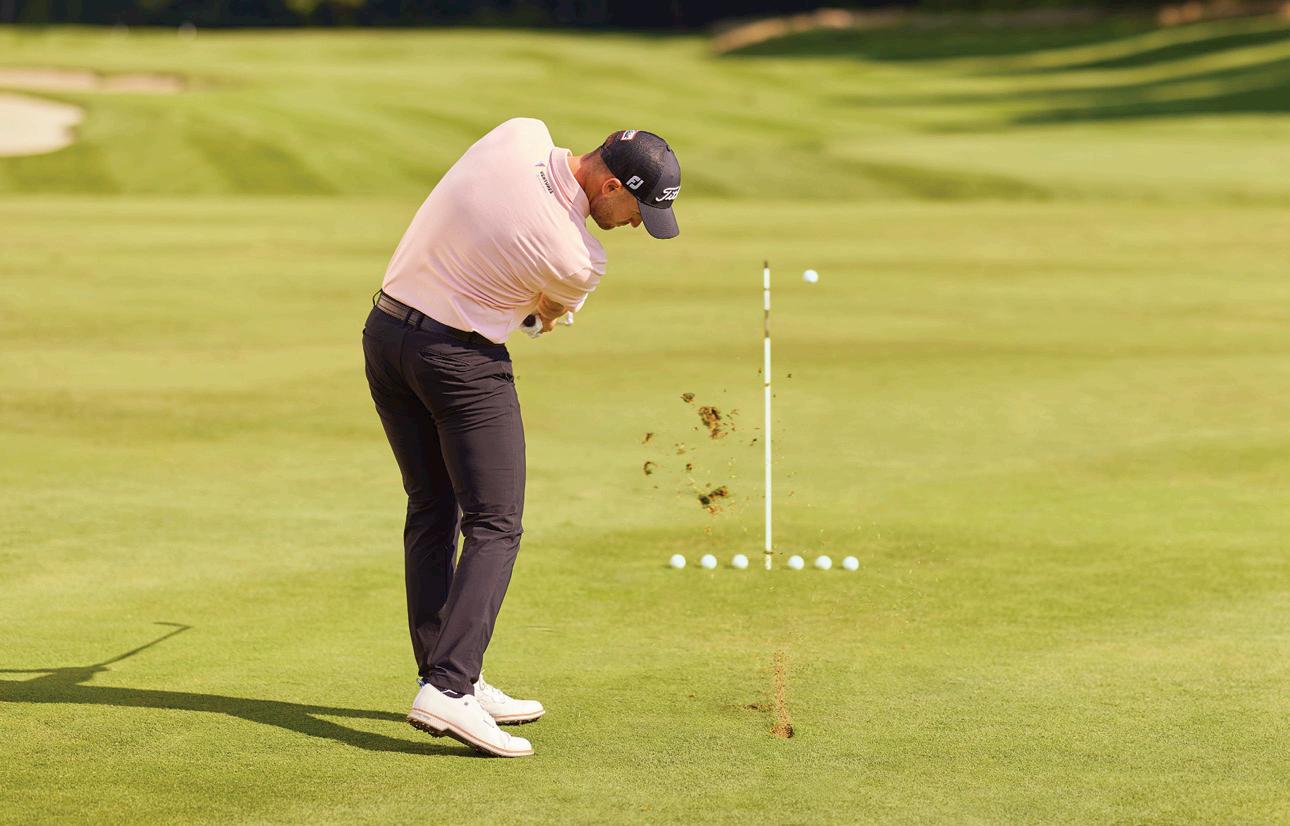
TRY THIS DRILL TO FREE THINGS UP: SEE SHOT, HIT SHOT
This drill helps free up my swing so that I can easily adjust from shot to shot on the golf course. Remember, no two shots out there are the same. You have to execute various techniques and swing shapes on command. The less you have to think about doing that, the better your chance.
For this drill, John will call out a particular shot shape, and I have to hit it. The station I set up in front of me looks elaborate (photos, left), and I’ll explain it in a second. Just know you can do a similar drill with just a club and ball. Use markers on the range to monitor your success.
I monitor my success by setting an alignment rod in front of me on my target line and placing three balls to the left and right of that rod. At the spot where I’ll be hitting from, I’ll scrape a line on the ground that matches the alignment rod, again establishing my target line.
John and I have a shorthand language for the shots I’m trying to produce. He’ll say, “One left, two left or three left,” meaning he wants me to create a shot shape that starts left of the rod, passes over the corresponding ball in front of me (above left) and then curves back onto my target line. Same with the balls on the right side of the rod. Those are for draws (below left). The number he calls out represents about five yards of curve, so “two right” means a draw that curves about 10 yards before coming back on target.
The point is to hold yourself accountable when you practise and reinforce confidence that your body can intuitively react to help shape shots without getting bogged down in mechanics.
golf. He was aggressive, confident and had an air about him that you just thought, This kid can play.”


As one of the best juniors in the country, Clark was recruited by many top programmes and opted to play for McGraw and the Cowboys. After arriving in Stillwater, Oklahoma, for his freshman season in 2012, Clark won team qualifying for the first event at Olympia Fields Country Club. McGraw walked all 54 holes with Clark in his first college tournament. Even though “his game was spot on”, McGraw realised something wasn’t right.
Near the top of the leaderboard midway through the second round, Clark drove it into a divot in the middle of the fairway on the ninth, and McGraw says: “It was five or six holes before I could get control of him to where I talked him off the ledge.” Clark shot 77, and despite closing with a 68 to finish 17th, McGraw was concerned. At the next tournament at Muirfield Village Golf Club, Clark had a similar meltdown.
“It was such a dichotomy from what I saw on the golf course and what I saw off the course,” McGraw says, noting that away from the course, Clark was a great teammate and easy to get along with. Figuring it was in Clark’s best interest to step away from competition, McGraw told Clark that he would be sitting out the rest of the autumn.
Clark was home for Christmas break and gearing up to return to action for the Cowboys in the spring of 2013 when tragedy struck. Lise’s breast cancer had returned. She was diagnosed in 1997 but had been cancer-free for nearly 15 years. Back in Stillwater for the spring semester, Clark’s oncourse outbursts derailed his chances to qualify for events. “I’d hit one bad shot, and it was as if I hadn’t hit a good one for weeks,” Clark says. “Everything was heightened, and [McGraw] saw that the pressures of golf and being at Oklahoma State were a trigger in making things worse for me.”
Frustrated on the course and struggling to cope with his mum’s sickness, Clark considered transferring. McGraw urged him to focus on healing first, saying in an email to Wyndham: “Your injury is internal and cannot be treated with a cast.” McGraw decided Clark would take a medical redshirt the rest of the year and take the time to meet with a Christian counsellor and focus on his academics. “I’m so thankful to Mike McGraw that he had me redshirt because I was able to spend more time with my mom,” Clark says.
The summer of 2013 hit Clark hard. In June, Oklahoma State let McGraw go, a testament to the monumental expectations of a programme that had recently won the NCAA Championship in 2006 and was runner up in 2010. Two months later, on August 2, Lise Clark passed away at 55. Despite the pain of his mother’s death, Wyndham initially played inspired golf. The redshirt freshman was named the Big 12 Player of the Year, recording eight top 10s and going 3-0 in match play at the 2014 NCAA Championship to lead the Cowboys to the finals. “It was so weird. I had a year where I was just kind of numb and didn’t think about it,” Clark says. “I was almost emotionless, and I was playing good golf.”
Yet after the terrific season, Clark fell into a deep slump, having just two top 10s during the next two seasons. “When I started playing bad golf, that’s when the [expletive] hit the fan,” Clark says. “I was so lost. I hated golf. I was doing things I didn’t want to be doing on and off the golf course. I had a temper. I was not a good teammate. I was mean to people. I had so much anger that I had lost my mom and that my family was in such disarray.” He needed a change.
september 2023 golfdigestme.com 31
FOCUS ON SWING BOTTOM, ESPECIALLY IN YOUR SHORT GAME

I learned at a young age from a couple of great coaches that with the short game, your setup dictates 90 per cent of what happens to the shot. If you get in a good set-up, you’ll be able to create a consistent bottom of the swing, which is key to controlling distance on pitches and chips.
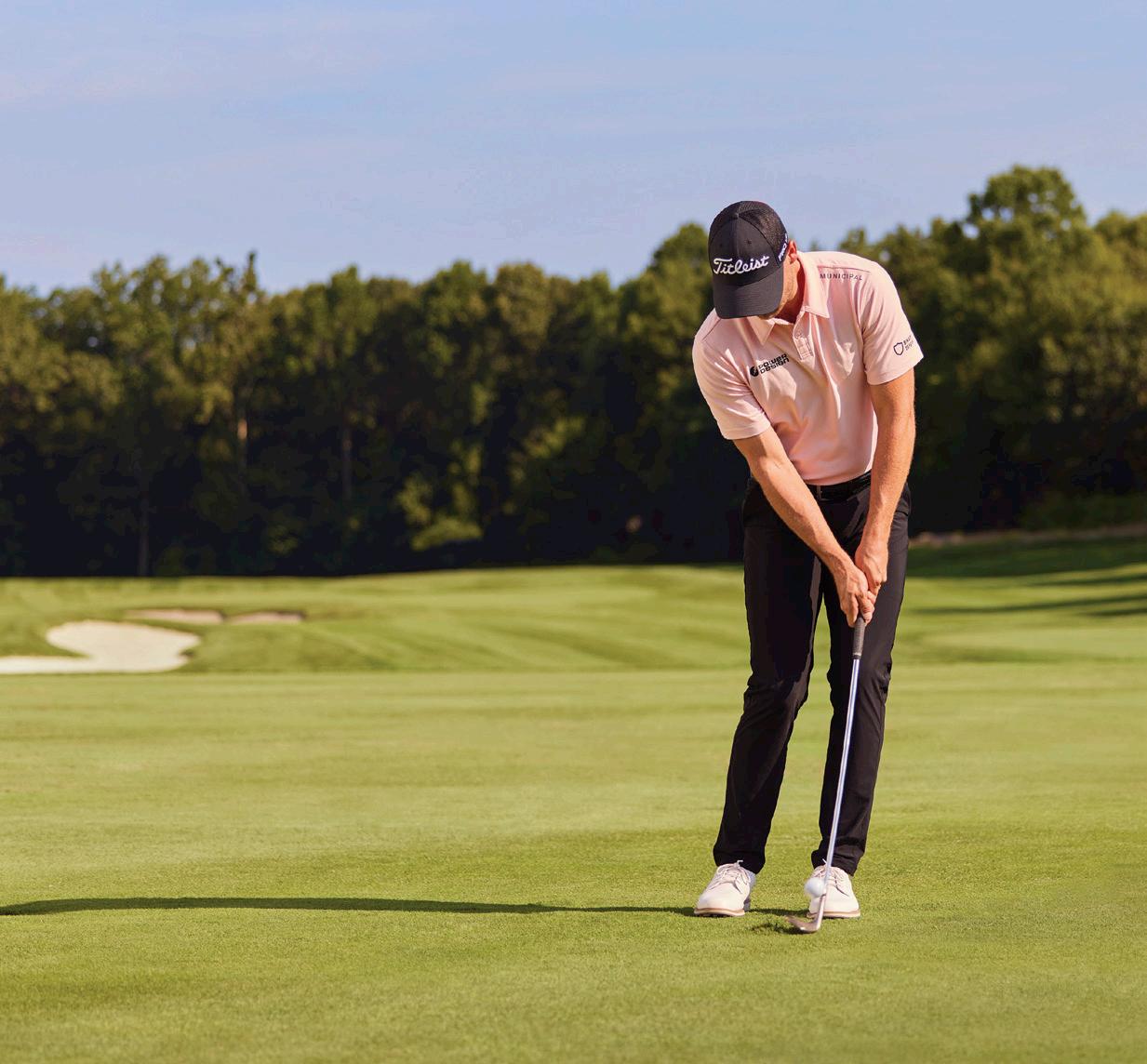
I always try to make sure that the centre of my chest is a touch
in front of the ball. That position on the ground below your chest represents where you want the club to bottom out to get that crisp contact you need around the greens (above). If you can make a swing where you keep it in that same spot, you’ll be able to control your short-game shots so much better. Then you’ll be able to adapt to the lie or situation to produce the shot you need. You can adjust
the face open or closed to hit lobs or low spinners. You can adjust the length of swing or speed to control distance. You get the idea — swing bottom is king.
When I practise these shots, I make sure to just clip it, clip it, clip it. Get to where it feels like a mindless habit. Remember, you’re an athlete first and a golfer second. Anything that frees up your swings should be a priority!
32 golfdigestme.com september 2023
“It’s not Oklahoma State’s fault. It’s no one’s fault. It’s just what happened,” Clark says. “I ended up transferring to Oregon simply because I wanted a new beginning.”
Casey Martin, the head men’s golf coach at the University of Oregon, had recruited Clark as a junior golfer and knew of his talent but also of his tendency to run hot on the course. “He was reeling emotionally and mentally on the golf course,” says Martin, who famously played on the PGA Tour despite an ailing right leg, which was amputated in 2021. “All the stuff of his life, it would come out on the course. It wouldn’t come out socially. He was the best ever. All that trauma and pressure manifested on the course. You’re realising, OK, this is not a golf issue.
“He just needed a lot of love and support. He needed direction, and he just needed some comfort,” Martin says.
The first step was reuniting Clark with a familiar family. When he was 13, Wyndham stayed with Jeff and Jamie Gaskill — an athletic couple then in their early 30s — for a week while playing in an elite junior tournament in Eugene. “It was so easy because we already loved this kid,” says Jamie, who along with Jeff signed up to host a junior player that week. “We were so impressed with how well-mannered he was and how driven and excited he was about golf.”

Even after choosing Oklahoma State, Clark stayed in contact with the Gaskills. When he decided to transfer, Jeff
offered Clark a place to stay. Clark figured he would stay with the Gaskills and their two young girls only for a few weeks before moving into the dorms. Realising a space of unconditional love was what he needed, a few weeks turned into 11 months. “Our house was a circus, and I would come in, and Jeff and Wyndham would be in the fifth round of a gin rummy game,” recalls Jamie, who was pregnant with their third daughter at the time. “The girls would give him makeovers. He’d have blue eye shadow and pink nail polish everywhere. It was a home that he could get a fresh start in and a new perspective.”
“It was such a great atmosphere because away from golf, I had a family,” says Clark, explaining that his siblings were on their own, and his dad had moved out of their childhood home. “It brought back the dynamic that I kind of lost when my mom passed.”
Also giving Clark a new perspective was first-year assistant coach John Ellis, a former all-conference player at Oregon who played on various mini-tours and qualified for the US Open in 2008 and 2011. Like Clark, Ellis battled a fiery streak on the course, admitting that when he started working with Clark: “I was trying to preach the things that I didn’t do.”
Though Martin doesn’t recall Clark acting out in competition while at Oregon, he struggled with pre-tournament anxiety. In one instance, Clark shot 61 at Eugene Country Club on Monday, setting the course record just days before the team was leaving for a tournament on Thursday. On Wednesday night, he was on the range complaining that his swing was broken.
To get Clark to loosen up, Ellis teased him. In team meetings when Martin would assign Ellis to walk with Clark the next day, Ellis would sigh and joke about how he couldn’t take it anymore and how he needed a PhD in psychology to deal with Clark’s on-course personality. The team would laugh. Clark would laugh. “The great thing about John is he understands all the things he did that sabotaged his career,” says Clark, who notes that Ellis, who now caddies for Clark on the PGA Tour, is considered one of the best players to have never earned a tour card. “When he sees me going down some of those routes of negative self-talk, treating myself poorly, getting too serious and treating the game too much like a job, he gets in my face. What John does so well on the golf course is he keeps it light.”
With the new light-hearted atmosphere, Clark’s game came back. He finished second in his first tournament as a Duck and got his first win of the season at the Arizona Intercollegiate. When he returned home to the Gaskills at 3am, hung on the garage door was a message from the girls: “Congratulations, Wyndham.”
“Probably spelled wrong because the girls did it,” Jamie says with a laugh. No one can replace a mother’s love, but in those moments, Clark had cheerleaders again.
Clark won two more times in the spring of 2017, including the Pac-12 Individual Championship, and was named the Pac-12 Player of the Year. “I don’t think I would be out here on tour playing professionally if I didn’t make that move,” he says of transferring to Oregon. “I would’ve fizzled out and probably ended up quitting golf after my time at Oklahoma State just because of how much frustration and anger I had.”
After turning professional, Clark won at second stage of Korn Ferry Tour Q school at the end of 2017 and earned status on the developmental circuit. Though he didn’t win on
september 2023 golfdigestme.com 33
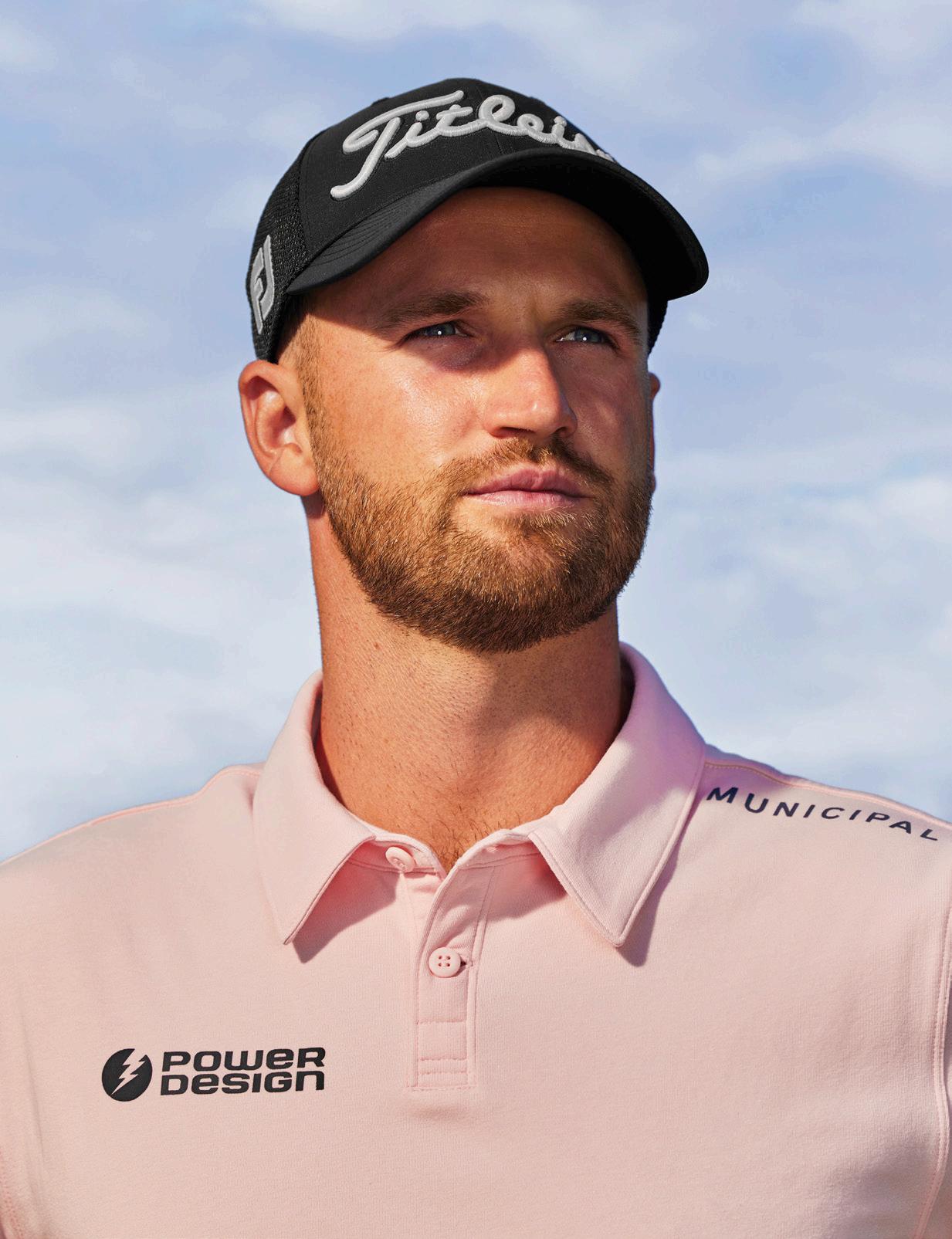
the tour in 2018, he finished inside the top 25 on the points list to earn his PGA Tour card. Then Wyndham called Ellis’ wife, Heather, to ask permission to have her husband caddie for him, and after receiving the green light: “I was all for it,” John says.
At the end of 2020 at the Bermuda Championship, Clark had a 10-foot putt on the fi nal hole to win his fi rst tour event. It sped by the right edge, and he lost in a playoff to Brian Gay. “This game really magnifies winning. If you don’t win, you’re kind of neglected,” says Clark, who now lives in Scottsdale. “Because I didn’t win, people didn’t talk about me. It was frustrating to me because one, I knew I was good enough to win, and two, it’s hard to keep your card every year. It was hard seeing peers have success, and I wasn’t.”
Boyd Summerhays, Tony Finau’s long-time swing instructor, was coaching Clark at the time and believes that Clark’s self-belief was good and bad. “His self-belief is why he won the US Open,” he says, “but it also created frustration at the start when he didn’t play to his expectations.”
Ellis, whose young son was using pacifiers at home, got creative. “I carried the binky in the bag and said: ‘When you’re acting like a baby, I’m going to give you this thing, and we’re not getting rid of it until you start changing,’ ” Ellis says. Nevertheless, the frustration of two more winless seasons continued to affect Clark’s play through the CJ Cup in South Carolina at the end of 2022. “It was some of the best golf he played all year, and he finished 29th. It had nothing to do with his golf shots,” says Ellis, who has helped Clark with his swing after he left all coaches in March 2022.
Clark’s agent, Rob Mougey, urged him to speak with a sport psychologist, and in January 2023, he started working with Julie Elion. “We had kind of a rocky start,” says Elion, who also works with Max Homa and has helped Phil Mickelson and Jimmy Walker. “[Clark] basically said: ‘Oh, I’ve worked with all you guys.’ ” Soon, however, Wyndham began to buy in to Elion’s interactive approach. The two now talk weekly, and the night before each round, Clark sends Elion specific goals for the next day.
“One of the main things we worked on is expecting good things to happen,” Elion says. “If he hits a crummy shot, the next shot could be a great one. It stops the negative spiral. He’s starting to realise it can turn around in a second.”
“All the confi dence and belief I had growing up, every year that I didn’t do well, it was dwindling a little bit,” Clark says. “When I started bringing positive self-talk in, my belief got so much better, and I started seeing results.”
Away from the course, Clark meditates regularly and reads
motivational and spiritual books. Also helping Clark’s positive mind-set is his girlfriend, Alicia Bogdanski, whom he met through mutual friends at the end of 2021. Bogdanski, who fittingly has a degree in psychology from Arizona State University, often shares with Clark all the positive comments she hears from the gallery. “If I see him overthinking something, I try to pull him back down, get him grounded and make him see things in perspective,” she says.
After a top-10 finish in an elevated event at the WM Phoenix Open, Clark was in contention at the Valspar Championship, Corales Puntacana Championship and the Zurich Classic of New Orleans, recording top-six fi nishes in all three tournaments. Though disappointed to not win, Clark felt he was building momentum. The momentum reached a crescendo in May at the Wells Fargo Championship at Quail Hollow, where Clark stormed into the lead with a third-round 63. On Sunday, he made four back-nine birdies to hold off Xander Schauffele and win his first PGA Tour event. “That was almost more important than my US Open win,” says Clark, who when asked if he could have won the US Open if he had not won at Wells Fargo, responded, “I really don’t think so. I believed I could always do it, but I didn’t. Wells really gave me that belief so that on Saturday and Sunday of the US Open, I could lean back on that Saturday and Sunday at Wells and think to myself, Hey, I’ve done this. I don’t have to be perfect.”
Clark came to Los Angeles Country Club with purpose. After playing a practice round the week before the championship, he texted Ellis, saying the course fit his game and concluding: “We’re going to win the US Open.”
A week later, on the Tuesday of US Open week, Clark hosted a dinner for his brother, Brendan, and some of his business clients. When talk of the championship came up, Wyndham reiterated that he was going to win. Any player can try to spark great play by repeating positive mantras, whether they truly believe them or not. With Wyndham, though, there was conviction. “He was different and had this confi dence to him that I’ve never seen before in my brother,” Brendan says.
Clark eagled the first hole on Thursday. He added seven more birdies to open with 64, trailing only Fowler and Schauffele, who both shot 62, the lowest score in US Open history. After a second-round 67, Clark pulled to within one of Fowler. The two former OSU Cowboys were paired together in the final group on Saturday.
Recall the simple explanation for Clark’s breakout season: The final 20 minutes in the third round. Remaining composed after finding trouble on the 17th, Clark twirled the club on his final approach and bounced back with a birdie. The championship was not over, but in that moment, Randall saw his son complete a 25-year journey: “All that fire is being channeled in the right way now,” he says.
When Clark tapped in the final putt to win the US Open by one over McIlroy, his yell was visceral. He achieved what he had always expected of himself, and out came all the pain, frustration and doubt that had long kept him from that moment. Ellis was the first embrace, followed by Brendan and sister Kaitlin. Alicia was after them, soon followed by Jeff Gaskill, Mougey and Elion.
“My team is built around keeping me on the right track,” he says. “They’re the bumpers that keep me going toward the direction I want to go.”
september 2023 golfdigestme.com 35
‘REMEMBER, THE NEXT SHOT CAN BE GREAT. IT STOPS THE NEGATIVE SPIRAL.’
FINCA CORTESIN GM
TAKES US THROUGH THE PROCESS OF PREPARING FOR ONE OF GOLF’S BIGGEST TOURNAMENTS


— THE SOLHEIM CUP
BY MATT SMITH
THE GAIN IN
SP IN
36 golfdigestme.com september 2023
FINCA CORTESIN in Andalucia will host to the 18th Solheim Cup from September 23-25 — the fi rst time the best female players from Europe and USA teams will fi ght it out for the title on Spanish soil.
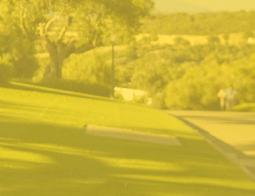


Ahead of one of the biggest events on the golfing calendar, Golf Digest Middle East caught up with the man with the plan — Finca’s General Manager Francisco de Lancastre David — as he puts the final touches to preparations ahead of the ladies’ arrival.
“We are getting there,” Francisco tells us during a brief time out from overseeing the logistics of putting on such a competition. “We are now very close to getting all the infrastructure in place and ready for the big day.”
But before we get too far into the big build-up, it is worth noting the journey Francisco has taken to get to this point — a journey at saw him take in two stints in the UAE.
Francisco was never one to turn down an opportunity, and that meant he was — relatively speaking — never in one place for too long before taking on a new challenge. This took him from Spain to Portugal and then back and forth between his home country and the UAE for almost 20 years before settling back at Finca Cortesin in continental Europe’s golf capital — Andalucia.
“After my Masters in Golf Course and Resort Management in Madrid, I started as an intern at a company in Madrid that developed golf courses,” he explains. “I was there for about 12 months when Monterrey Golf Club in the Algarve was being developed and I got chatting to the guys in charge of development. When they were close to opening,

they called me to say they were recruiting. They invited me over and the rest was history.


“I was there for five years, right from the beginning, when the opportunity came to move to Dubai and the Els Club, which I took up for three years before coming over to Finca Cortesin as Director of Golf. Another three years later I found myself back in the UAE at Saadiyat as Group Director of Golf — and as General Manager of the three Aldar properties in Abu Dhabi [Saadiyat, Yas Links and Abu Dhabi Golf Club]. I spent a total of five years in Abu Dhabi overseeing the three clubs when the opportunity arose to come back home to Finca as GM as the course was awarded the 2023 Solheim Cup.
“During my time in Abu Dhabi we had hosted a lot of big tournaments — the Abu Dhabi HSBC Championship, Ladies European Tour, Gary Player Invitationals — and that was something I loved. Obviously the Solheim Cup is one of the biggest events in the world and it was too big an opportunity to pass up.”
PHOTOGRAPHS COURTESY FINCA CORTESIN
READY TO ROLL Finca Cortesin (above) is undergoing its final preparations for the Solheim Cup this month, under the watchful eye of GM Francisco de Lancastre David (left)
While being surrounded by all things golf throughout his 17-year career, Francisco has certainly sampled contrasting lifestyles in the UAE and Spain.
“I loved life in the UAE, having lived in both Dubai and Abu Dhabi,” he says. “It was a different experience as me and my wife were in very different moments in our life.
“The first time, it was just the two of us, but the second time around in Abu Dhabi we had our son with us. So we got to enjoy the ‘eclectic’ life in Dubai before the family lifestyle in Abu Dhabi.
“I think for the golf and hospitality industry, the UAE is a great place to be, to learn — I have learnt so much during my years.
“In Spain, Finca Cortesin is an amazing property, but next to us we also have Vaderrama, Sotogrande, La Reserva, Zagaleta, it is a cluster of really high-end resorts, and there is a different mindset in terms of what you are trying to achieve with your product.
“In our case, because we have a residential component and hotel component, the golf club is part of a bigger strategy to develop all the areas of the business. Whereas in Dubai and Abu Dhabi the clubs are more like individual businesses.”
Although Francisco is relishing the immediate challenges in Spain, he confesses there is one thing he really misses about the UAE.
“The weather,” he says with a chuckle. “I miss those UAE winters when the weather is just perfect. Here in Spain, even though we in the Costa del Sol, it is not the greatest weather in winter.”
However, on the flip side …
“We have very little traffic — a far cry from Sheikh Zayed Road, so the peace and quiet is much easier to find over here.”
Finca’s greens are greener than most, and the resort’s drive for sustainability saw it recently awarded the GEO Certified label.
Since opening in 2006, it has always had the environment in mind, placing emphasis on the preservation of the surrounding area, including the use of recycled water, eco-friendly grasses, and even the introduction of bees to the property to help pollinate the region.
“Since we opened 16 years ago, sustainability is something we have always been conscious about, being irrigated with recycled water since day one — something that is quite rare in Europe,” Francisco says. “We also changed our grass to Bermuda, which uses 30 per cent less water. The award is really important to have, but we had been following all these practices for a long time already.”
The course itself has undergone a revamp for the Solheim Cup, with the ladies playing a different route to that of the usual members, adding to the spectacle.

“The course is undulating with a lot of elevation,” Francisco tells us. “This means fans [75,000 are expected] can see multiple holes and greens from a single viewpoint.
“We have changed the route of the first six holes. Hole No. 4 is iconic here — downhill par-4 with water, but certainly drivable. It will now become No. 1 for the Solheim, because everyone in the grandstands can see the entire hole from one spot. From player point of view, they have a big decision

GAME-CHANGERS
The
WE CHANGED THE FIRST SIX HOLES: NO. 4 — ICONIC, DOWNHILL WITH WATER — WILL BECOME NO. 1, BECAUSE EVERYONE IN THE GRANDSTANDS
CAN SEE THE ENTIRE HOLE FROM ONE SPOT
38 golfdigestme.com september 2023
Finca Cortesin track (right) has been rerouted for the 2023 Solheim Cup, while the event’s branding can be seen all around the course and clubhouse
to make from their first shot if they want to go for the green on a wonderful risk-and-reward hole.

“Hole 11 will come down from a par-5 to a par-4 to accommodate and area for spectators, so this is more of a logistic than strategic change.
“Around holes 16 and 17 we have most of the hospitality as that is where 80 per cent of the matches are expected to finish. That is where we are expecting a lot of the drama as the sessions come to a close.”
Both teams will be staying under one roof at the on-site five-star hotel, something that was a key aim for Francisco.
“That is going to be a great experience, as very rarely do both teams stay in the same place,” he says. “I think this may be the first time ever. So it will be a different experience. One of the biggest goals for us was to give them all the same worldclass experience we give to all our guests.

“Oh, there will be two separate dining areas for the teams — just in case they are needing to discuss tactics in privacy.”
When the action gets under way, Francisco admits he is looking to cheer on some local flavour at his home course, with Spaniard Carlota Ciganda confirmed on Suzann Pettersen’s 12-strong team.
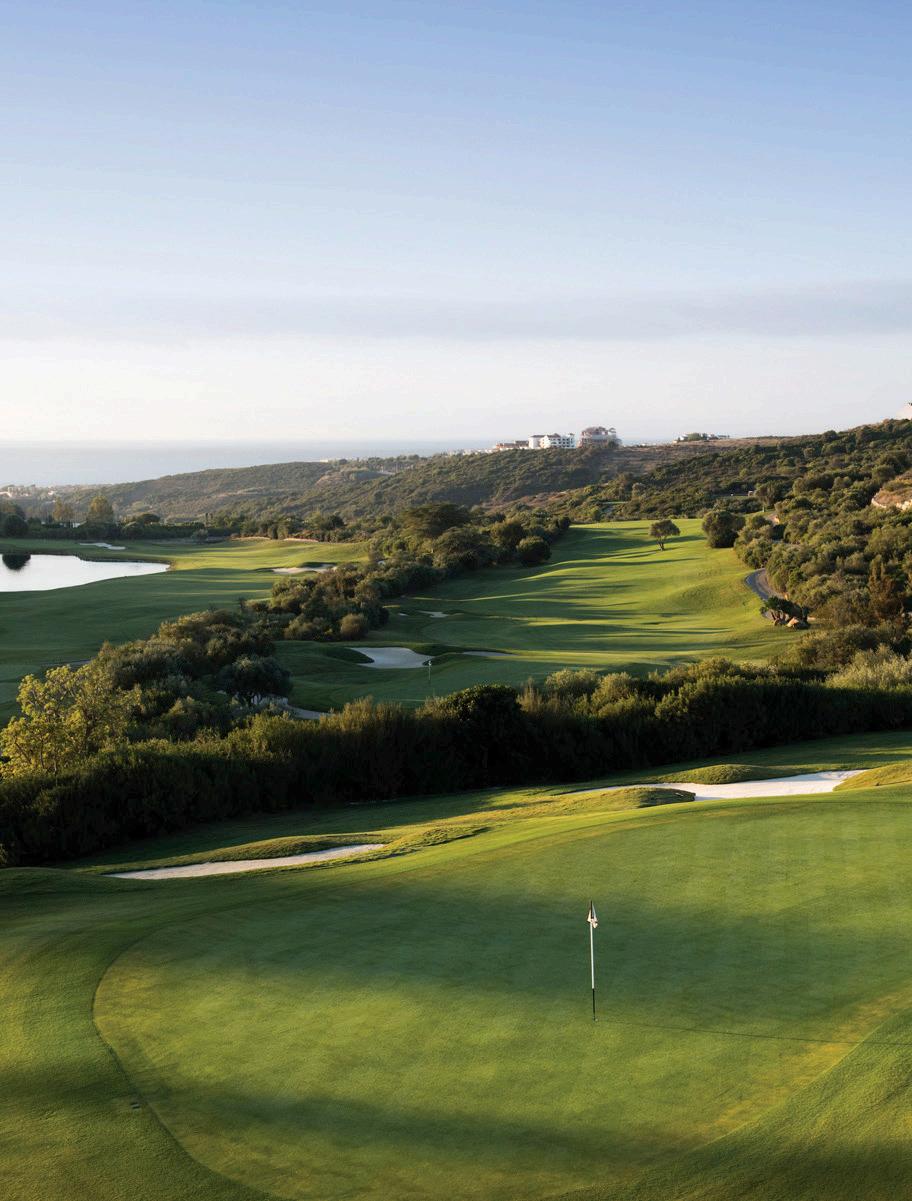
“We actually sponsor two Spaniards — Ana Pelaez and Nuria Iturrioz — but they didn’t quite make it. But to have a Spanish player would be great for the atmosphere and the home fans. I think Carlota will be a great addition as she has great inside knowledge of the course here.
Maybe Francisco will pass on a few Finca secrets of his own to Pettersen and co.

september 2023 golfdigestme.com 39





















at the Ryder Cup (or your member-guest)






















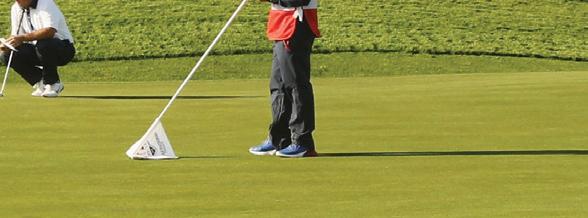






If nothing else, even during the dreadful weeks when players miss the cut, they can take some solace in letting only themselves down. They’ll find the answer on the range and go get ’em next week.
The Ryder Cup is different. Players have teammates depending on them and a country or continent to represent. Most players might hit only a handful of shots during the course of their career under the kind of intense pressure they will feel during one round at a Ryder Cup. Players talk of sleepless nights and their hands shaking so much that they can’t keep their golf ball on the tee. There’s simply no pressure like Ryder Cup pressure.

The beauty of golf is that all of us have felt those moments in our own way. Maybe you feel it on the first tee of your club championship or in a tough match during your member-guest or when you have a putt to win a grudge match against a buddy. Those are moments on the golf course when we feel small, the world feels big and the task of hitting a golf ball feels impossible. “Handling pressure is a skill, same as hitting a wedge shot or hitting your driver straight,” says US team captain Zach Johnson. “It’s a skill players need to work hard to develop and train.”
Players and coaches know more about the swing today than they ever have. A class of experts has risen to prominence within the industry and helped coaches optimise players’ moves down to the smallest details. However, the brain remains an enigma, and players and coaches are not entirely sure how to work on it. Players have tried a variety of methods, and many believe that if they can use technology to optimise the way the brain works, it could provide the edge that wins the day in high-pressure moments.
Ahead of the 2023 Ryder Cup at Marco Simone Golf and Country Club near Rome, some players believe they have information about what lies beyond — clues that might help the rest of us answer one of golf’s most existential questions: What’s the secret to playing well under pressure?
BRAIN WAVES AND BREATHING
Bryson DeChambeau’s eyes meander across the room. Once they arrive at the door, he slowly lifts his right hand to wave hello.
The 2020 US Open champion is in a hitting bay at Dallas National Golf Club, sitting in a chair and taking deep breaths, with wires attached to his head. The other ends of the wires are attached to a kind of computerised box, which sounds like an air conditioner that has just turned on. The box seems to be working considerably harder than DeChambeau, who takes another deep breath as he lowers his hand carefully back to its original position.
“There’s actually a lot of science behind it,” DeChambeau says later. “I learned a lot about my neural pathways and how to control my breathing.”
The tool DeChambeau was using to find an edge that day came from a company called NeuroPeak Pro, which offers a variety of brain-training products, from a portable NTEL belt — designed for anyone to wear like a heart-rate monitor — to the
previous pages : jamie squire / getty images • spieth : keyur khamar / getty images 42 golfdigestme.com september 2023
During regular PGA Tour events and even major championships, players can console themselves with a variety of crutches: a fanbase, a fat cheque, some sweet sponsorship deals.
more intensive version DeChambeau was using. The belt syncs to an app, but players are hardwired into the more intensive programme, which requires a certified NeuroPeak expert to monitor it just as one would oversee a polygraph test.
The system monitors what scientists call alpha, beta and gamma brain waves, and it correlates those with breathing and heart rates. Alpha brain waves occur when a person is relaxed or resting, when the heart is beating slower. Beta and gamma brain waves occur when a person is problem solving, and the heart is beating faster. When someone feels nervous, worried or anxious, the heart starts beating even faster, causing the brain to produce excess beta brainwaves.
When that happens, it’s hard to focus and maintain control over the body and to stay calm and think logically. In simple terms, it’s what we’ve come to know as feeling the pressure.
“Your body effectively initiates a fight-or-flight response in these moments,” says Nick Bolhuis, Neuropeak’s vice president of performance pro -
grammes. “Your nervous system begins ramping up. It’s like a car with 8,000 RPMs.”
Through a series of sessions, NeuroPeak helps players find the heart rate that produces an optimal mix of alpha, beta and gamma brainwaves, which keeps the pressure at bay and helps them feel calm and focused—in what many consider “the zone”. Each player’s zone requires a unique mix. Once NeuroPeak finds it, players learn to use different breathing techniques to return there on command. “I’ve got some different breathing techniques I know work for me that help calm me down or can get me into it a little more,” DeChambeau says. “Everybody plays at different levels. A guy like Jordan Spieth who is going all over the place is going to play his best at a little higher [heart rate] than a guy like Patrick Cantlay, who is lower and very even-keeled.”
NeuroPeak Pro became a key part of DeChambeau’s lead up to the 2021 Ryder Cup, where he earned two and a half points in three matches. The company has worked with a growing number of past and future members of the US Ryder Cup team to various extents, from Justin Thomas to Spieth to current captain Zach Johnson.
CONTROLLING THE HEART RATE
The mind is where the secret lies, but the road to understanding it starts with the heart. In the most basic terms, your heart beats faster when you’re nervous and slower when you’re not. Nothing gets elite players’ hearts beating faster and feeling more nervous than the Ryder Cup. The 2021 contest allowed us for the first time to glean some insight into some data that highlights how players are feeling inside the ropes.

WILD AT HEART
Jordan Spieth is one of several Ryder Cuppers studying how his heart rate impacts his play.
Whoop, a fitness band worn by multiple players on their wrists and arms, pegged Ian Poulter’s heart rate on the first tee of his Friday foursomes match at a whopping 133 beats per minute. That’s before he hit his tee shot.
To put that in perspective, Poulter’s heart rate during that moment was almost identical to Justin Thomas’ heart rate when he thought his drive was heading for the water on the final hole of his 2021 Players Championship victory (139 beats per minute) and a few beats shy of Rory McIlroy celebrating after holing a bunker shot on the 72nd hole of the 2022 Masters (143 beats per minute). It’s just a few beats shy of when an average adult male walks off a roller coaster.
The modern tour player measures everything he does: stats, swing speed, equipment specs. In recent years, players have taken that approach to the body. Players understand that their ability to stay calm under pressure is influenced by their heart rate, and they are taking a close look at factors that might influence it and, therefore, their focus.
McIlroy, a stalwart for the European team, is
september 2023 golfdigestme.com 43
perhaps the best current example. An investor in Whoop, McIlroy tracks his sleep and heart rate daily. He also recently wore a glucose monitor in competition to track his blood sugar after noticing that he struggled to maintain focus mid-round. Too much glucose would send his heart beating faster and leave him feeling nervous for no reason. A crash in his blood sugar would make him feel tired and not able to focus. The glucose monitor helped him understand why these spikes and dips were happening and how to smooth them out.
It was an issue he noticed at the PGA Championship, when a sustained 3.5-degree increase in his skin temperature overnight impacted his ability to sleep and left him feeling groggy and struggling to focus the next day. For McIlroy, his
ability to focus and handle pressure comes down to three key habits off the course: more protein, nine-and-a-half hours of sleep with a sleep mask and a hard cap on alcohol. “One glass of wine for me is totally fine, but if I go above one glass, that’s when my heart rate will start to rocket up,” he says. “I’ve found that my body responds best if I have protein at the start of the day. Managing my protein intake means I don’t have these massive spikes and massive crashes.”
Another mind-body health trend has worked its way into both team rooms at the Ryder Cup: cold exposure. McIlroy successfully petitioned thencaptain Thomas Bjorn for a cryotherapy chamber in the European team room in 2018. The US team added one, too. Spieth is a convert, as is Brian Harman, who secured his spot on Team USA after a victory at the 2023 Open Championship. Harman ended each round with a five-minute ice bath. Jon Rahm, who finished T-2, did too.
Cold exposure doesn’t just help players’ muscles recover, it spurs the brain to create higher levels of dopamine, a neurotransmitter that an emerging body of science suggests improves people’s ability to concentrate, control their mood and sleep better. “There’s a dopamine-hit effect,” says Dr Harry Sese, a member of Rahm’s team. “It helps the body recover, and it helps mental acuity. Players feel great after they do it.”
Little upgrades such as these can pay off under pressure. “As far as being a bundle of nerves, I did pretty good,” Harman said after his victory at Royal Liverpool.
Whether it’s sugar or alcohol, less sleep or more dopamine, the effects of all of the above are just as true for the rest of us. Eat something sugary or imbibe in a few too many drinks on the course, and your heart rate might increase and make you feel inexplicably anxious. However, if you don’t eat anything — or experience the post-sugar crash we all know too well — your heart rate will dip, along with your ability to focus. We’re all humans, after all. Some might be better at hitting a golf ball than others, but our bodies all work in a relatively similar way.
MANAGING THE RYDER CUP’S COMEDOWN EFFECT
When the heart is beating too fast, like on the first tee at the Ryder Cup, it’s harder to focus. Perceiving a threat, the body starts pumping blood everywhere. It’s a reaction designed for survival — like running away fast or fighting for
 GET EXCITED Thomas, a player who relishes pressure, celebrates during the 2021 Ryder Cup.
GET EXCITED Thomas, a player who relishes pressure, celebrates during the 2021 Ryder Cup.
thomas : andrew rredington / getty images • rahm : stacy revere / getty images 44 golfdigestme.com september 2023
‘My attitude is that if I’m not nervous, I’m not doing something right,’ says Justin Thomas. ‘If I’m nervous, that means it means something to me.’
your life — not gently rolling a short, delicate, intricate putt into the hole. In moments like these a player will likely call upon longer, slower, deeper breaths to lower his heart rate and get back to his optimal focus zone.
That notion is somewhat obvious, though — most people know deep breaths help when one feels overwhelmed — which is why much of the company’s work focuses on the other side of the equation: teaching players to use shorter, shallower, faster breaths to raise their heart rate during low-pressure moments.
“It’s common for players to experience a mental lull in the middle of rounds. Their heart rate slows below their optimal range, and the ability to focus their attention on the details is inhibited,” Bolhuis says. “Basically, they’re becoming bored.”
Most of these focus lulls, for pros and amateurs alike, happen during the middle of the round. The nerves of getting the round off to a good start have subsided, and the motivation of finishing strong hasn’t arrived yet. Learning to keep your attention during those low-stress moments is just as essential as knowing how to handle the highpressure ones.
During the Ryder Cup, it’s less boredom and
more of a comedown effect after high-pressure moments. The best example of this could perhaps be seen during the Sunday singles match between Rory McIlroy and Patrick Reed at the 2016 Ryder Cup. A series of birdie and eagle exchanges culminated in McIlroy draining a 55-foot putt on the eighth hole. He celebrated by putting his hand to his ear in an “I-can’t-hear-you” gesture to the hostile crowd. Reed followed by dropping a 22-footer moments later and wagged a finger at him from across the green.
We remember that moment but not what happened next: The pair combined for just one birdie on the ensuing nine holes. The match went stagnant, not because of the high-pressure moment but the relatively lower one that followed. “It was tough at the end, it really was,” McIlroy admitted at the time. “I ran out of steam.”
PRACTISING UNDER PRESSURE
If the contest requires managing the roller coaster of Ryder Cup pressure, players will spend the ensuing months trying to simulate the kind of high-pressure moments they’ll experience in Rome. The most common tactic these players

september 2023 golfdigestme.com 45
RAHM TOUGH Jon Rahm’s 3-1-1 record at the 2021 Matches was one of the few highlights of Europe’s loss.
Rory McIlroy recently wore a glucose monitor in competition to track his blood sugar after noticing that he struggled to maintain focus mid-round.
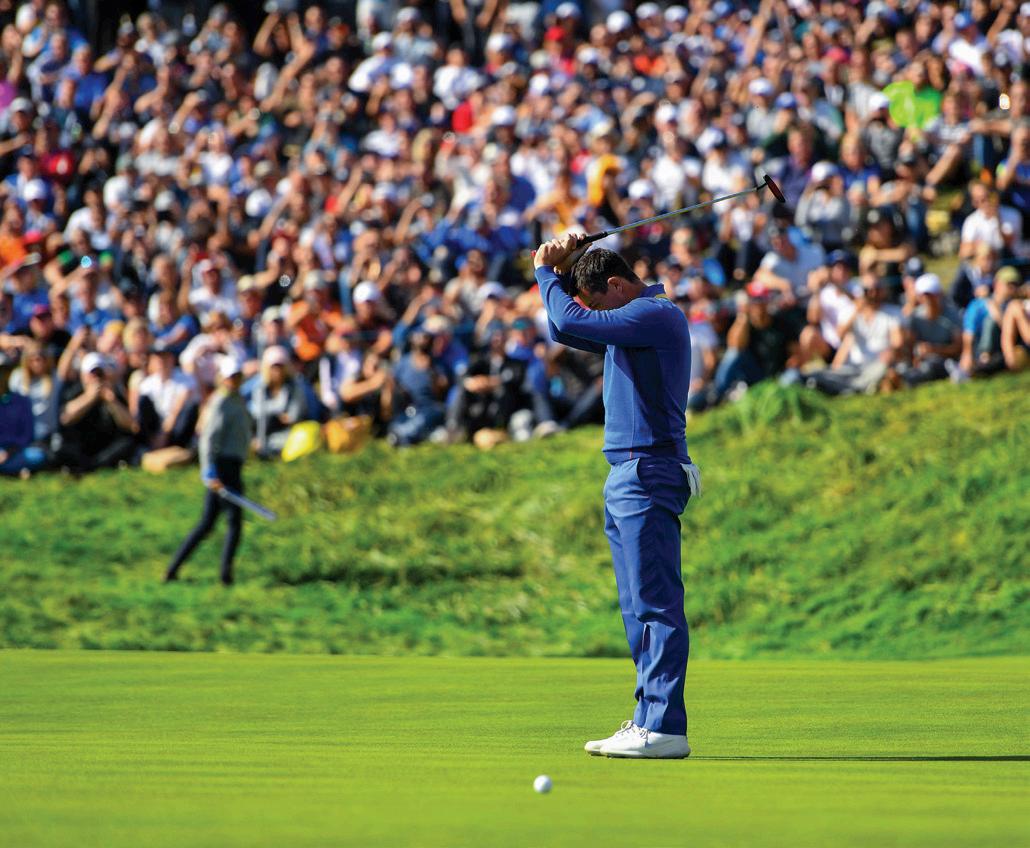
use is to set tasks, or challenges, that elevate their heart rate and make them feel nervous.
Justin Thomas will try to accomplish this by hitting a certain number of wedge shots within a specific distance. His goal is to get his heart racing faster when he practises than when he plays.
Matt Fitzpatrick’s attentive nature means he is compelled to log every shot he hits in practice. On the range he will challenge himself to hit shots at a target and log his totals from the day before. His goal is to beat them. He does the same thing from a variety of key distances on the practice putting green. This methodical approach gives his practice some stakes: practising under the prospect of accomplishment and the threat of failure. “I’m a
STRONG OF MIND
McIlroy says a protein breakfast, limited alcohol and a lot of sleep are his three keys.
control freak,” he says of his mind-set. “I’m very much obsessive-compulsive and organised.”
Jon Rahm has started timing his practice sessions. He found himself setting a hard time limit to complete a task with some stakes. Without the ability to wait out the clock, his nerves started cooking. “It’s very difficult to put yourself in that position. It’s very hard to be able to replicate the scenarios,” Rahm says. “For me, it’s all about creating competition. If I can create an environment where I’m competing against myself and put myself in a position of being able to feel the same nerves, pressure is pressure. If I can manage that, I can do it when it really counts.”
Try as they may — and players like Rahm will
ramsey carry / sportsfile via getty images 46 golfdigestme.com september 2023
— there is no true simulation for Ryder Cup pressure. Captain Zach Johnson knows this all too well. His career is littered with successes under pressure, from green jackets to claret jugs and Ryder Cups. Occasionally players will reach out to him for advice on playing under pressure. His answer is often the same: When the pressure ticks, the only thing you can do is embrace it.

“The players I look at, not only do they welcome it, they relish it, train for it, savour it; they’re almost more comfortable in it,” Johnson says. “The extreme example is obviously Tiger Woods, but a guy like Brooks [Koepka], it seems to me when the gravity is at its strongest, he seems to bring out his best. DJ seems to do that. Jordan
DEEP BREATHS
DeChambeau says he uses different breathing methods to calm down or get himself going.
[Spieth] seems to do that. On the European side, Jon Rahm and Rory McIlroy, of course.
“It’s what makes these guys the best players in the world. They seem to almost find freedom and a comfortable zone even when there’s an immense amount of pressure,” Johnson says. Players who lean into the magnitude of the moment, the ones who train for it and don’t see nerves as a burden but an opportunity, those are the players Johnson wants on his team, and they know it.
“My attitude is that if I’m not nervous, I’m not doing something right,” Thomas says. “If I’m nervous, that means it means something to me.”
Now ask yourself: Is that a feeling you want to experience, too?
september 2023 golfdigestme.com 47
richard heathcote / getty images
Handling pressure is a skill, same as hitting a driver straight, says Zach Johnson. It’s a skill golfers have to develop and practise.

DECADES AN AMERICAN WRITER HAS ENJOYED A LOVE AFFAIR WITH GOLF IN THE LAND OF




MICHELANGELO






 BY ROLAND MERULLO
BY ROLAND MERULLO
 ILLUSTRATIONS BY WESLEY MERRITT
ILLUSTRATIONS BY WESLEY MERRITT
I recently had the opportunity to play the newly redesigned course where the 2023 Ryder Cup will be played — Marco Simone Golf & Country Club on the outskirts of Rome.
Twenty-two years earlier almost to the day, I had enjoyed an older version of Marco Simone on an assignment to write about The Eternal City’s golf and eating options. That trip introduced me to golf Italian-style, and a dozen times over the past two decades I’ve made month-long visits to the land of my father’s ancestors, playing courses from the sunny southern coast of Sicily to the Alpine hills on the Swiss border.
In most ways, golf in Italy is like golf elsewhere, with certain delectable differences. I’ve played three rounds at an elegant course called Olgiata, 45 minutes north of Rome.
On one of those occasions, I joined a couple of 60-somethings, avid golfers
and club members who were enjoying their early retirement. As we putted out on the ninth, they asked if I wanted to stop for a bite before playing the back.
I assumed, as most Americans would, that they meant a quick panini and a bottle of something cold. Instead, we were seated at cloth-covered patio tables and served a meal of salad, pasta, wine, espresso and a slice of torta before staggering off to the 10th tee.
Aside from the food at the turn and a few other small quirks (Dogs are often welcome on Italian courses. I once played a round with a couple on a course up north, and they walked a small dog on a leash from first tee to final green), the universal language of golf is evident in the bel paese
Even the vocabulary will be familiar to English-speaking visitors: rough, green, putt, fairway, driver, birdie, par and bogey are all cognates. Double-bogey is doppia-bogey, and “woods” and “irons” go by their Italian names: legno and ferro. Hole is buca, tee is partenza and a tee time is an appuntamento, but English will likely be spoken wherever you play.
Italy’s golf history is scant compared to that of the British Isles, but the game has been played around Rome since at least the first decade of the 20th century. British diplomats, posted to the Italian capital and missing their home links, were known to knock a ball around the Borghese Gardens. Eventually, they built courses on Italian soil, and the game took root and slowly but surely sprouted.
Since the Italian Open debuted in 1925, it has been won by the likes of Peter Alliss, Billy Casper, Greg Norman and David Feherty, and Italy has produced top-ranked players like Costantino Rocca, 2018 Open champion Francesco Molinari, Matteo Manassero — the youngest player ever to win a European Tour event — and Silvia Cavalleri, a winner on the LPGA Tour. More recently, Benedetta Moresco was the low amateur at the US Women’s Open at Pebble Beach in July.
Foreigners searching for golf in Italy will find everything from shabby tracks carved out of flat, featureless fields to classy country clubs with Maseratis and Ferraris in the parking lot, fellow golfers skilled and unskilled, fast and slow, considerate and not-so-considerate — in other words, about what they would
find at home. One nice difference: a visiting player with, say, a 10-handicap, will be considered, in most Italian circles, an impressive player.
Italy’s richer north boasts a larger share of courses: the mountain-goat Menaggio and Cadenabbia near Lake Como, where George Clooney likes to play, Parco Regionale la Mandria on the grounds of the former hunting estate of the Royal House of Savoy near Turin, where the Molinari brothers honed their skills, Golf Club Garlenda north of Genoa, and Rapallo Golf and Tennis south of that city, and humbler old classics like Villa d’Este and Monticello near Milan.
A new addition to this list is the picturesque Robert Trent Jones Jr design Antognolla, recently voted the best course in Italy. Set in a gorgeous green bowl surrounded by steep Umbrian hills not far from Perugia, Antognolla has an abundance of doglegs, superb greens, wonderful views, world-class service and plenty of challenge. Try to ignore the 12th-century castle looking over it all as you navigate the No.1 handicap hole, the 455-yard, par-4 16th, and be sure to have dinner at nearby Il Caldaro.
In the poorer south, golf is harder to come by, though Acaya near the Apulian city of Lecce is a wonderful flat, watery track. Verdura in Sicily is first-rate, and Sardinia’s Pevero Golf Club fits in well with the Costa Smeralda yachting crowd.
None of those, however, provide the post-round fascination of the courses in and around Rome: Marco Simone, Castelgandolfo, Acquasanta, Parco de Medici, Olgiata and Federazione Italiana Golf (Italy’s equivalent of PGA National) a bit farther afield.
The American writer Anatole Broyard once said: “Rome was a poem, pressed into service as a city,” and as every visitor soon realises, walking the lanes and alleys of that city feels like strolling through human history. Even littered streets and hordes of summer tourists can’t spoil the glories of Rome. During our many visits, my wife, Amanda, and I have spent enough hours at the Sistine Chapel, the Colosseum, Castel Sant’ Angelo, Trevi Fountain and the Forum to have fallen into the habit of seeking out less well known spots for our Roman excursions, food and lodging.
Our first meal on this recent trip was
50 golfdigestme.com september 2023
at an unpretentious trattoria called Der Pallaro, which is set in an alley a few blocks from Campo di Fiori. Paola Fazi has been cooking or presiding there since decades before our first visit, in 1991. There is no menu. You sit down, and the food arrives, always the same: a delightful dish of stewed lentils accompanied by buffalo mozzarella, fennel, olives, arancini and prosciutto. Next come two types of perfectly al dente pasta in a bowl, one in a cacio cheese
sauce, the other marinara. Then a meat dish with cooked spinach and homemade potato chips, followed by a slice of that day’s custard cake. The wine list has two choices, red or white, and you pour your own from a squat, unlabelled pitcher, with free refills.

After having managed to digest that feast, the next day we hit another favourite, this one in Trastevere, the formerly working-class but newly hip southern section of the city. Il Mirag-
gio is off the beaten track enough to escape Trastevere’s tourist crush, and the food is close to perfect (try the spaghetti alla mediterranea with a side of cannellini beans in a garlicky tomato sauce) and, given the location, ridiculously reasonable.
On this visit, we eschewed Rome’s better known chain hotels, too, in favour of an unusual lodging, The Hotel Scalinata di Spagna, staying for a couple of nights in its semi-subterranean
TIPS FOR TRAVELLING TO ITALY
• In Italy, tipping is neither required nor expected, but a few extra euros for particularly good service is appreciated.
• Pizza is served primarily for the evening meal and usually arrives unsliced because Italians often eat pizza with knife and fork.
• If you use the train system, be sure to validate your purchased ticket before boarding or you risk a fine. This does not apply for tickets presented on your phone screen.
• Driving the Autostrada you’ll need to stop for a ticket (biglietto) and should use the lanes marked carte for payment with credit card.
• Try to avoid restaurants with a large English-language menu displayed in the window.
• A typical Italian menu will have sections for appetiser, first course (pasta) and second course (meat or seafood), then dolce for desserts and contorni for side dishes. You don’t have to have every course!
• Tap water is almost never served in Italian restaurants. You’ll be asked if you want your bottled water frizzante or naturale, sparkling or still.
• Italians appreciate any effort made to say a few words in their language and will often compliment you lavishly if you can manage a buona sera in a half-decent accent.
• Rome’s tourist areas make for safe walking, though watch your wallet on crowded buses and in squares.
• It’s helpful to arrive with some euros in your pocket, but ATMs respond well to foreign debit cards. ATMs near post offices charge the smallest fee; service fees in tourist areas and at airports can be excessive. Credit cards are accepted at golf courses and almost everywhere else.
• It’s best to take the direct Leonardo train shuttle from Fiumicino Airport into Rome. Avoid unofficial cab drivers who cruise the terminal and prey on foreigners.
apartment aside the Spanish Steps, a place with 18-foot ceilings, a winding marble staircase, an opera singer serenading a crowd below our windows and a cool jazz club close by, on Via Gregoriana. One evening we bought roasted chestnuts from a sidewalk vendor and made a passeggiata along the cobbled streets of Rome’s ancient centre, eventually ending up near the Piazza del Popolo for a bowl of vegetable soup at Caffe’ Rosati. It’s a pricey, touristy section of the city, a neighborhood where you can grab a $4,000 Brioni suit or a $3,500 Dolce and Gabbana purse for a friend mired at home, or step into an ancient church for a moment of quiet contemplation.
To be closer to Marco Simone, we moved out to Tivoli for several nights. Tivoli is a marvelous small hill city, with the famous Villa d’Este available for a tour, and shops, eateries, churches and piazzas in abundance. Residenze Gregoriane offered a marble-sided, candlelit basement pool that made us wonder if some kind of toga festival was about to occur. The Residenze has the friendliest owner and staff on Earth, all English-speakers, who bring you breakfasts in a courtyard, the walls of which are covered with 500-year-old mosaics.
Practising my Italian there after a delicious tuna steak at nearby Il Ciocco, I discovered that Filippo Grasso, one of the servers, had been a passionate golfer in his youth and had spent several years working at Marco Simone. “You’re in the fresh air,” he said, waxing poetic about what he called his passione, his face lit by a glow all golf lovers would understand, “your feet are upon the Earth. You cannot think of anything else, any worries, any troubles. You meet wonderful people.”
He confessed to not having played Marco Simone since it was re-routed in 2021 by European Golf Design in cooperation with Tom Fazio II (whose father, Jim, with David Mezzacane drew up the original), and so we made the easy 40-minute drive from Tivoli, curious
about what we would find.
A note here on the Italian roads, and I say this as a former Boston cab driver: The “easy” in the previous sentence is relative. I’ve driven probably 25,000 miles in Italy, and renting a car has enabled my family and me to see places even the country’s expansive train system couldn’t show us. However, my recommendation would be, unless you are a very skilled and fearless driver, one who understands Italian road signs, is fluent with a stick shift, doesn’t mind being tailgated at every opportunity at speeds between 20 and 120mph, can navigate instructions at the gated toll booths, and can handle a vehicular urban circus in which Vespas and motorcycles are constantly zipping past your door handles, you might want to hire a car and driver. That way, you can watch the circus and perhaps even enjoy it.
One example should suffice. Years ago, Amanda and I were riding a bus north from the city of Trento, on our way to a mountain hideaway in the Dolomites. I was sitting in the rear left part of the bus, next to a window. As we climbed a steep road, one lane of traffic in each direction, I noticed a Mercedes swing out behind us into the opposite lane, intent on passing. This wouldn’t have been particularly unusual, despite the solid, no-passing line, but then a small Fiat appeared, in the far breakdown lane, going uphill, the wrong way, with a thousand-foot dropoff on the far side of the guard rail to the driver’s left. The Mercedes passed the bus, then the Fiat angled in and passed the Mercedes, and just in time, too, as a fully loaded logging truck came thundering along in the downhill lane, shaking the bus windows as it passed. If that’s your idea of fun, go ahead and reserve a rental car for your Ryder Cup visit.
Fans heading over to watch the matches won’t get to play Marco Simone, so, stepping on to the first tee and perusing the beautifully groomed opening par 4, I felt a particular thrill. That thrill, I’m sorry to say, didn’t
52 golfdigestme.com september 2023
YOU’RE IN THE FRESH AIR. YOUR FEET ARE UPON THE EARTH. YOU CANNOT THINK OF ANYTHING ELSE, ANY WORRIES, ANY TROUBLES. YOU MEET WONDERFUL PEOPLE.
EXCLUSIVE PAINTINGS, SCULPTURES, PHOTOGRAPHY AND TIMEPIECES FROM AWARD-WINNING INTERNATIONAL ARTISTS






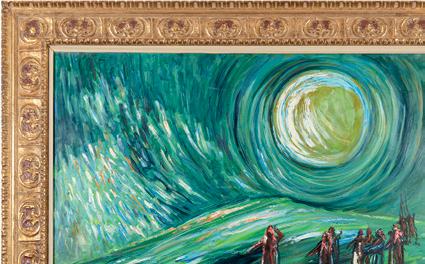 Limited Edition Clock by David Galbraith
Photograph by Joachim Guay
Limited Edition Clock by David Galbraith
Photograph by Joachim Guay
last. Marco Simone has some of the more interesting green complexes I’ve seen, but the combination of hard, slick putting surfaces and multiple, severe undulations didn’t seem quite reasonable. The approaches often require blind shots to these greens, and, though the holes offer some variety, until the home stretch I didn’t encounter one that felt particularly rich in character. Complicating matters is the surrounding territory, marked everywhere by high-tension wires and towers, the land mostly dry and flat, with only Mount Sant’ Angelo Romano to the north enlivening the scenery. Not until I reached the interesting 16th, with its risk-reward downhill tee shot to a green protected by a creek and several of the course’s numerous bunkers, did I begin to appreciate the massive amount of work and skill that has gone into the new design. The wonderful par-3 17th, surrounded on three sides by deep fescue, and the downhillcurling 18th, its mounded fairway dropping toward a green guarded by a small pond, helped me revise my opinion upward.
As I played, with Amanda along for the ride, we watched a team of workers planting small red flags in the fairways, marking lines, we were told, where the rough and fescue would be brought farther in to narrow the landing areas considerably. We were also told that not a single hole remained from the original design. Because putting is so often the determining factor in Ryder Cup play and because the new greens are so treacherous, the competition will likely elicit excitement among the fans and complaints from the participants. The numerous elevation changes will offer an abundance of perfect spots from which to view the action.
Somewhat underwhelmed by the visit to Marco Simone (although we had caught a glimpse of the cup itself being carried in for a televised event), I sought comfort two days later in an old friend, Circolo del Golf Roma Acquasanta, Italy’s oldest golf course (1903), and one that sits within Rome’s municipal borders.
If Marco Simone shouted “New!” at every step, Acquasanta, laid out by British diplomats, said “Old” quietly and proudly. Golfers will find numerous elevation changes, but the hundreds of maritime pines and ce -
dars lining the broad fairways give the property the feel of an ancient imperial villa. The greens were absolutely perfect, quick and true, and held approach shots — mine, at least — much better than the newer, harder surfaces at Marco Simone.
Acquasanta has hosted three Italian Opens, but it’s now too short for major tournaments, topping out around 6,500 yards. Eminently playable, gorgeous to look at, with occasional glimpses of nearby Roman aqueducts, some 400-yard-plus par 4s, and a devilish creek that comes into play on half a dozen holes, the course is quietly elegant and sufficiently challenging. As a bonus, three miles farther along Appia Nuova, just past the Capannelle horse racing course, stands a famous old restaurant called Salvi with plenty of parking (which, in and around Rome, is rare as a gold strike), superb pizzas, pastas and grilled meats, and staff that serve with grace and aplomb.
back, which had several blind shots, but there is a gracefulness to the new design that made the course feel like a mix of the best features of Marco Simone and Acquasanta. There are also reported to be Etruscan tunnels running beneath every hole.
Having grown up with an Italian last name, in an Italian-American enclave hard against Boston’s northern border, and then having left for fancy schools and higher socio-economic altitudes, I’m all too familiar with the slurs and assumptions some Americans still make and hold at Italians’ expense. The old prejudices and stereotypes have not yet quite expired.
Driving through Kansas in 2020, I saw a sidewalk placard advertising a pizza place by using an olive-skinned dude in a felt hat, his face surrounded by fake bullet holes. The “ dese and dose ” comments (Italian has no ‘th’ sound, so immigrants to America had trouble pronouncing it), the organised-
To add a dose of sugar to my Roman golf espresso, and because several of Marco Simone’s critics suggested it, I made a return visit to the redone Olgiata Golf Club on the city’s northern fringe. I played that day with an intrepid high school classmate (“intrepid” because we walked the first five holes in steady rain — Rome’s only rainy day in the previous three months — with a few minutes of lingering thunder). Housed in a gated community that requires you to make a tee time before attempting a visit, its sinuous but spacious fairways are lined with willows, pines, poplars and palm trees and spotted with ingeniously positioned bunkers and several water hazards (many of the water hazards on Italian courses have orange life preservers hung on nearby posts, in case a non-swimmer happens to topple in). Olgiata is a comfortable walk with six sets of tees ranging to 7,200 yards. We both preferred the front nine to the
crime association made worse by “The Godfather” films and “The Sopranos,” I have to say it’s a touchy area for some of us.
I counter those offences by traveling to Italy whenever I can. Great food, si. Half the world’s art treasures, si. Incredible churches (like Santa Maria in Trastevere—which has a must-see mosaic of Jesus standing beside his mother with an arm draped around her shoulders) si, certo. But less well known is the grace and generosity apparent in the way many Italians interact with each other, and even, despite the avalanche of tourists, with visitors. Countless times, walking in cities both south and north, we’ve asked directions only to have the locals decide to walk with us — in one case for 20 minutes — to make sure we found our destination. When my friend and I arrived hungry and a few minutes late for our tee time at Olgiata, Andrea Trottini was mind-
WE WERE SEATED AT CLOTHCOVERED PATIO TABLES AND SERVED SALAD, PASTA, WINE, ESPRESSO AND A SLICE OF TORTA BEFORE STAGGERING OFF TO THE 10TH TEE.
54 golfdigestme.com september 2023
ing the desk there and encouraged us to have a leisurely snack at the bar before teeing off.
This graciousness often extends to the course, where impromptu matchups segue into real conversations, mid-round meals, and, occasionally,
as happened to me at Rome’s workingclass course, Fioranello, an invitation to meet fellow players for drinks on an upcoming weekend night.
Italy cannot compare to Ireland and the United Kingdom in terms of the number and quality of golfing options,
but it has enough good courses to fill a vacation itinerary, and with its food, drink, art and hospitality, the land of Michelangelo and Manassero, Caravaggio and Cavalleri might very well offer the travelling player full compensation for making the trip.

september 2023 golfdigestme.com 55
SPLIT MORE FAIRWAYS

Sepp Straka’s takeaway is a big key to his accuracy
By Dave Allen
AT 6FT 3INS, 235LBS, SEPP Straka could easily be mistaken for an American footballer and not an emerging PGA Tour star. The 30-year-old Georgia alum is definitely one of the more imposing figures in pro golf. Yet despite his tall, muscular physique, Straka’s driving game relies more on accuracy than power. Through midJuly, Straka ranked 20th on tour in driving accuracy (65 per cent of fairways hit) and in the middle of the pack in driving distance (298.3 yards). He’d much rather hit the short grass than stretch the field.


“I’m a pretty good driver of the ball for the most part,” says Straka, the first Austrian-born player to win on the PGA Tour — at the 2022 Honda Classic. “I by no means hit it far compared to a lot of guys out here, but I feel like for how far I hit it, I’m pretty accurate.”



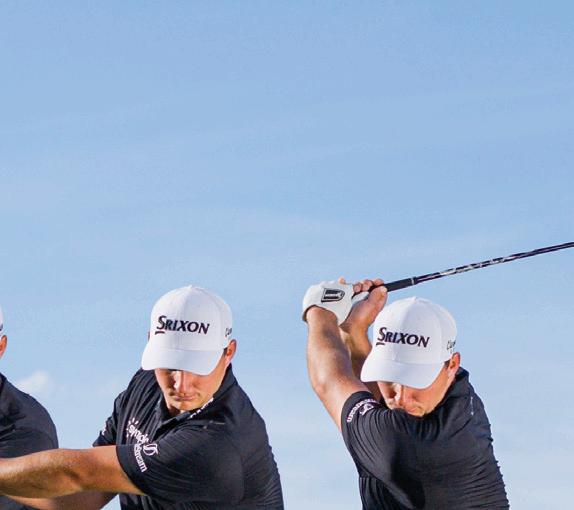

Straka’s swing coach of 18 months, John Tillery, says the distance will come once Straka’s swing becomes more efficient. He also notes that Straka is taking “better care of his body these days” and is getting even stronger.
“As far as the bones of the swing, he
PHOTOGRAPHS BY DOM FURORE
BODY / SWING ANALYSIS 56 golfdigestme.com september 2023
doesn’t have to get longer,” says Tillery, director of instruction at The Golf Club at Cuscowilla in Eatonton, Georgia. “That’s more a hopeful outcome of doing the right things than it is a target of ours.”
One of the things Tillery and Straka are constantly working on is his takeaway. Straka, whose final-round 62 in early July capped the largest comeback victory after 18 holes in John Deere Classic history, has a tendency to swing his hands faster than his body during the early part of the backswing, caus-


ing the arms to separate and get pulled behind his body. When his arms outrun his legs and mid-torso, they get loose and long at the top, and he has a difficult time syncing things back up on the downswing.

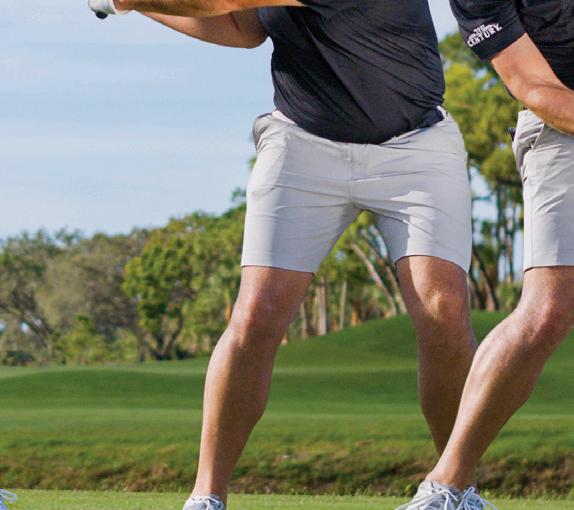
As a result, Straka constantly checks his hand position on the takeaway, making sure they stay in line with the middle of his chest (above, second image) — a sign that his arms, legs and chest are all in sync off the ball. Straka’s shaft and lead leg are virtually parallel to one another in the next frame, another indica-

tion of a good takeaway. All this sets up what Tillery refers to as Straka’s “magic move,” his transition (above, fifth image). As long as everything is in sync and his arms don’t get too far behind him, he can drive his legs hard against his torso without getting stuck or flying open, a common mistake among amateurs.
“His feet are working in the correct direction, meaning his trail foot is pushing behind him, and his lead foot is pushing forward,” Tillery says. “It’s the only way to rotate hard and stay centred without spinning open.”
september 2023 golfdigestme.com 57
GET OUT OF YOUR SKULL
Learn how to put the brakes on razor-thin bunker shots
 By CJ Nafus
By CJ Nafus
outside of a shank, there might be no more feared shot in the short game than a skulled bunker shot. Catch one extra thin from the greenside sand, and you risk bringing double-bogey or worse into play.
The trouble with the skull is that in trying to avoid it, most amateurs are doomed to repeat it. They aim at a spot even farther behind the ball with the intention of driving the clubhead into the sand, and in doing so, make it increasingly more likely that they’ll catch the ball first. Fortunately, with a few simple set-up and swing adjustments, you can conquer your fear of the skull and learn to hit high, spinny bunker shots that land softly and safely on the green. Here’s how. —with dave allen
CJ NAFUS is director of instruction at Roxiticus Golf Club in Mendham, New Jersey
BODY / BEST YOUNG TEACHERS B
PHOTOGRAPHS BY JAMES FARRELL 58 golfdigestme.com september 2023
The first mistake amateurs make is that they set up too open — aimed left of their target (for righties) — at address. This encourages a steep, out-toin downswing path and too sharp an entry into the sand, which causes the club to dig, not skim. Instead, set up with your shoulders square or slightly closed to the target — pointing right (above, left) — which will promote a shallow, in-to-out path and not as deep a divot. Position the ball directly opposite the logo on the left side of your chest and distribute your weight evenly on both feet. Next, dial the clubface open several degrees, then take your grip and lower the shaft and handle until the clubhead is level to the ground. This ensures the loft stays pointed at the target even when the face is open. All of these adjustments should put you in a better position to
swing your arms more naturally and hit the spot you’re looking at, about an inch or two behind the ball. If the clubhead enters the sand too far back — a common mistake with an overly steep swing — it’s liable to be traveling upward when it finally reaches the ball, exposing the leading edge to the top half of the ball.




As for the swing, feel like you’re lifting the club from underneath the grip and allow your trail arm to fold quicker on the backswing (centre), which sets the club on the proper path. As the club enters the sand, imagine it’s coming in on the same smooth landing angle as an airplane, cutting a shallow swath through the sand (right). Continue to swing and rehinge your arms after impact so that your follow-through matches the length of your backswing.
The following drill helps promote a more consistent entry point in the sand, and stops you from bottoming the club out too soon. Place a towel down approximately two clubheadlengths behind a ball and hit some shots, missing the towel on the backswing and downswing. After a dozen balls, you should have a greater awareness of where the clubhead touches down, about one to two inches behind the ball. The better you get at it, the closer you can move the ball to the towel.
 SQUARE UP TO SHALLOW YOUR ANGLE OF ATTACK
SQUARE UP TO SHALLOW YOUR ANGLE OF ATTACK
september 2023 golfdigestme.com 59
Drill: Refine your entry point
MAKE CHIPPING EASIER

Use your hybrid like a putter from tight lies
By Alana Swain
during my collegiate playing days I carried a hybrid in my bag for one purpose only — to chip the ball from tight lies around the green. Whether you’re in the fringe 10 feet off the green or you have to navigate a steep slope (above), using a hybrid is an effective way to chip for those who struggle making solid contact with their wedges. The extra mass behind the clubface helps lift the ball just enough to power it through the fringe, all but eliminating fat contact or chips that come up well short of the hole. Best of all, you don’t have to hit the ball hard. You play the shot just like a putt, with a few minor adjustments. Let me show you how. —with dave allen
SET THE TOE DOWN
• This is a shot you don’t want to hit hard, so treat it just as you would a putt. Choke down to the bottom of the grip (top photo, below) and stand closer to the ball (left), which shortens the shaft and makes it sit more upright, similar to your putter. Set the toe of the club down behind the ball, with the heel up in the air (bottom photo). This way, you’re impacting the ball on the toe and not the centre of the clubface, dampening the contact some. Now, make your normal putting stroke for a shot of the same distance. Don’t add any power. Keep your stroke long and smooth, and the hybrid will take care of the rest.


PHOTOGRAPHS BY JENSEN LARSON
ALANA SWAIN is an instructor at the PGA Tour Performance Centre at TPC Sawgrass in Ponte Vedra Beach, Florida.
60 golfdigestme.com september 2023 B BODY / BEST YOUNG TEACHERS








































































































































































































































SHORTLIST ANNOUNCED FOR EVENT SPONSORSHIP, TABLE BOOKINGS AND GENERAL ENQUIRIES manish.chopra@motivate.ae | mansi.khatwani@motivate.ae | sangeetha.js@motivate.ae #GulfBusinessAwards GulfBusiness CONNECT WITH US VOTE HERE FIND OUT MORE Presented By Vote Processing Partner Partner Venue Partners
MEET TAYLORMADE’S 2023 P·790 IRONS
Hollow-body set with tungsten and weight-shifting techniques
By Mike Stachura
TAYLOR M ADE’S fourth-generation P·790 irons continue the trend of bringing high-speed face flexing and a progressive approach to forgiveness across the full set in the guise of compact shaping that better players prefer as much as those aspiring to be better players. Again, the key is a hollow construction, but among the more dramatic improvements is how slugs of tungsten are used differently
through the set. The 30-40-gram pieces are set horizontally and low on the long irons to provide better launch, while on the middle irons a chunkier piece rests vertically out toward the toe to improve stability on off-centre strikes. There’s no tungsten on the short irons (8-iron through gap wedge) to allow the centre of gravity to progress higher with each higher loft to optimise spin and prevent shots from ballooning.

RRP AED 6,495 4-PW Steel
RRP AED 7,370 4-PW Graphite Available at all eGolf Megastore locations and online at egolfmegastore.ae

62 golfdigestme.com september 2023
B
BODY / EQUIPMENT
PRICE WATCH THE VIDEO Scan the QR code to watch ARN presenter and former Golf Digest Middle East editor Robbie Greenfield take the new TaylorMade P·790 irons through their paces
COOL THINGS 3
1


WEIGHTING GAME. This hollowbody set uses heavy tungsten and other weight-saving and weight-shifting techniques to make sure each iron’s centre of gravity is distinctly ideal through the set. That’s why the long irons feature an internal bar of tungsten that’s low within the body and the middle irons use tungsten relatively low but also vertically along the toe side to create a more stable frame. The idea is straightforward: The irons in this set aren’t simply slight variations in a design from say the standard 7-iron construction.
“Everything remains a hollow-body design through the set, but the way the mass is positioned and distributed within the clubhead changes with each one,” said TaylorMade’s Matt Bovee, director of product creation for irons. “Each iron has been individually designed. We want the CG to be the lowest in the long irons, but we’re OK with it creeping up in the shorter irons and the scoring irons because you want to be able to control that flight.”
The way the tungsten weighting varies came through the use of an artificial intelligence platform that dialled in on the ideal location and amount of tungsten for each iron, Bovee said.





“This is a proprietary tool that we’ve created to work within a set of constraints in a box to play with, and then it optimises the mass positioning given those criteria,” he said, noting that the progression of the CG from low in the long irons to gradually rising in the short irons slopes in a more linear fashion than previously. “In the case of the 7-iron, for example, what we’ve said is basically, look, we want to maximise the stability and the forgiveness of this thing, consistency is going to be key. For the long irons, we want to prioritise getting that centre gravity as low as we possibly can to help to launch them in the air, which is another way of making those irons more forgiving.”
Among the keys to getting the weighting right is how the back wall of each iron features variable thickness through alternating thick and thin sections, almost like latticework. It’s a technique the design borrowed from the crowns on some of the company’s past metal woods. There’s also more room to position the tungsten farther toward the toe on the long and middle irons because the opening for the face insert is larger.
2FACE VALUE. Made from high strength forged 4140 chromoly steel alloy, that larger face creates a better trampoline. On the short irons (8-iron through gap wedge) the face insert is a traditional shape set within the margins of the face, but on the 3-iron through 7-iron the face wraps around the sole in an L-shape. They also feature a cut-through slot in the sole to get better face flexing particularly low on the face. The use of the light but strong chromoly steel helps to create a larger region of the face that’s most flexible, thanks to its ability to get sections of the face as thin as 1.5 millimetres.
3THE SOUND OF FEEL. While more forgiveness has been baked into this generation of P·790, this iron still is designed to resonate with better players. That’s where all the e orts toward forgiveness, tungsten weighting and a faster face can cause problems when it comes to sound and feel. With more pieces and a di erent alloy in the face, controlling unwanted vibrations becomes a challenge. TaylorMade’s engineers again inject the heads with a lightweight urethane foam that’s 68 per cent less dense than versions used on the fi rst two models (but the same Speedfoam Air as used in the 2021 model). That material allows the thin face to fl ex while controlling unwanted sound and vibration.
On top of that, the internal structure of each iron is dialled in to support how that face is going to flex di erently, given the di ering use of tungsten. A small wing or arm stretches from where the tungsten is housed to a back bar to further damp vibration in the head.
“This allows us to control the distance of this unsupported area behind the face,” Bovee said. “During impact when the iron face is flexing, we want to make sure we have the most premium sound possible. Even though it’s designed to perform and have all that ball speed, this finger controls the flexibility and the sound of that unsupported area.”

september 2023 golfdigestme.com 63
in association with
AGE 20 LIVES Irvine, California
STORY
Won the 2020 US Women’s Amateur, the 2022 and 2023 NCAA individual titles and her pro debut at the Mizuho Americas Open.
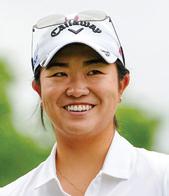
CLOSE-KNIT TEAM
Being part of two winning Curtis Cup teams as an ama teur was incredible. It’s hard to de scribe how much it means to represent your country. I’ve been playing with a lot of the players on that team since I was very young, so we were very close.
WHAT'S IN MY BAG : ROSE ZHANG
DRIVER
SPECS Callaway Paradym Triple Diamond, 9°; Fujikura Ventus Red 5S shaft.
This driver is set to plus one, meaning it’s really 10 degrees. Still, the ball doesn’t balloon and get knocked down in the wind. I usually hit a draw, and it minimises too much draw bias.
FAIRWAY WOODS/HYBRID


Callaway Rogue ST LS, 13.5°, 18°; Fujikura Ventus Red 6R shaft; Callaway Paradym, 21°, KBS Tour hybrid shaft.
I’ve had the Rogue ST fairway woods for two years. The R-flex shafts make getting the ball in the air easier, and a 4-hybrid is much easier to hit than a 4-iron, and it fills the yardage gap perfectly.
Callaway Apex (5-iron through A-wedge); Nippon 850R shafts, Golf Pride Tour Velvet 60R grips.
I’ve been using Apex irons for six or seven years now. I enjoy these because they are so forgiving. Also, I’m not the longest player out here, so these give me a distance boost. I’ve tried other models, but these always win out.
WEDGES
SPECS Callaway Jaws Raw (54°, 58°); True Temper XP95 R300 shafts.


I carry only two wedges. I like using bounce, but I don’t necessarily need a Phil Mickelson-like lob wedge to hit shots way up in the air. I’m not too particular about grind as long as it’s versatile enough to hit the shots I need to. I also want to hit low shots, and these allow that.
PUTTER
SPECS Odyssey Tri-Hot 5K Double Wide; 34 inches, 3°, Odyssey Midsize Pistol grip.
I like a wider-blade-style putter. I played an Odyssey O-Works blade for about seven years. Eventually the insert gave out, and I couldn’t use it anymore. This has been a great replacement. I began using it my freshman year of college about a year and a half ago.

ONLY ONE FOR ME
The Callaway Chrome Soft X is high-spinning around the greens but low off the longer clubs. I use only one ball a round, provided I don’t lose it.

CHALK TALK
Some players use string to assess their putting line, but I prefer to use a chalk-line tool because it helps me to see how the ball is rolling.
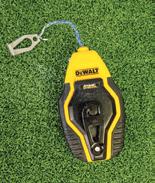
JUMP-START
I carry a jump rope in my bag, and I always use it right before every round. I jump about 200 times before I start my warm-up. It really helps to get the blood moving.
 —WITH E MICHAEL JOHNSON
—WITH E MICHAEL JOHNSON
B BODY / EQUIPMENT zhang : dylan buell / getty images PHOTOGRAPHS BY BEN WALTON CLUB YARDS* DRIVER 235 3-WOOD 215 5-WOOD 200 4-HYBRID 185 5-IRON 170 6-IRON 160 7-IRON 150 8-IRON 140 9-IRON 125 PW 113 AW 95 54˚WEDGE 80 58˚WEDGE 70 * CARRY DISTANCE
64 golfdigestme.com september 2023

Trevino Taught Me How to Yo-Yo
By Jerry Tarde
In my garage at home is a red canvas, cylindrical bag with a protruding aluminium tube that retrieves golf balls without back strain. It’s my longest serving piece of golf equipment in continuous use. The Original Shag Bag was invented by Clifford Hurd and Ian McDonald in 1948, and the same company, Madewell Products, has manufactured them ever since. By the early 1970s when I took up the game, owning one was a rite of passage, and every self-respecting golfer had a shag bag.
As a teenager on a par-63 muny in northeast Philadelphia, I would hang out behind the right greenside bunker on No. 18 and hit half wedges on to the green when nobody was coming. Then I’d suck up the balls in the shag bag—puh-plok, puh-plok, puh-plok and repeat this routine behind the left greenside bunker. They were the afternoons of a misspent youth.
My wedge hero in those days was Lee Trevino, who could check lowflying shots to a grinding halt after not one or three, but two — always two — bounces. I used to go with my dad to the old IVB-Philadelphia Golf Classic at Whitemarsh Valley Country Club, and we would watch in amazement while Lee hit balls as if they were yo-yos on a string. He knew how to “walk the dog.”
For my money, I didn’t aspire to launch 1-irons like Jack Nicklaus or Tom Weiskopf. I wasn’t even impressed so much by Ben Crenshaw’s languid putting stroke. (This was long before Phil Mickelson had perfected the 64degree lob over a man’s head standing five feet in front of him.) Back then, what I coveted were those clothesline wedges that screeched to the hole.
Trevino was the genius I studied most. He had just beaten Nicklaus in the

1971 US Open at Merion Golf Club with a dazzling wedge game. “I love Merion, and I don’t even know her last name,” he quipped. His backswing was compact, and he kept the clubface open. I once heard him say: “Wedge shots are hit by the body turning, not the arms swinging. You need a good tight lie. Play the ball back in your stance, and as soon as you start the downswing, turn your left hip, and the hands have got to follow around to the left.”

I read he developed control of the clubhead as a kid rounding up practice balls by hitting them with only his left hand. When you hit down on the ball, you compress it against the ground, and the feeling is that you’re squeezing the ball up the grooves of the face, adding backspin. “You can smell the rubber burning,” Trevino liked to say.
I recently asked Tom Watson if my memory was right, and he doubled down. “One of the most vivid memories I’ve had,” he emailed back, “is when Trevino hit his third shot to the par-5 18th during the Players Championship
at the old Sawgrass Country Club in 1980. The wind was blowing 30 miles an hour at his back, and he hit the shot, head high, downwind, and it looked like it was going to be over the green, but it took two hops and put on the brakes. One of the best shots I’ve ever seen! Trevino was the best at controlling the golf ball during my era of play.” (I looked it up, and there’s a video of the winning shot exactly as Tom described.)
One year I decided to practise only with my wedges and went 12 months never hitting a practice ball with any other club. I wore out my shag bag — puhplok, puh-plok — and my handicap was the lowest it has ever been. Decades have passed, and the memory is still sweet. I never found that discipline again. I remember it as my Trevino Season.
M u s open at merion : leonard kamsler / popperfoto / getty images MIND / THE NEXT ONE’S GOOD
SUPERMEX Trevino won the 1971 US Open with wedge shots that screeched to a halt.
Jerry Tarde, with little evidence to show, still considers the lowchecking wedge his bread-and-butter shot.
66 golfdigestme.com september 2023






AVAILABLE AT ALL MAJOR BOOKSTORES AND ON BOOKSARABIA.COM MOTIVATEBOOKS MOTIVATEBOOKS MOTIVATE_BOOKS www.motivatemedia.com YOUR GUIDE TO REAL ESTATE INVESTMENT LEARN TO MAKE WELL-INFORMED DECISIONS AND CREATE LASTING WEALTH N e
ZG23 VENT




RRP AED 849.00
Super light cushioning designed for dynamic movements and mesh upper that breathes on hot days
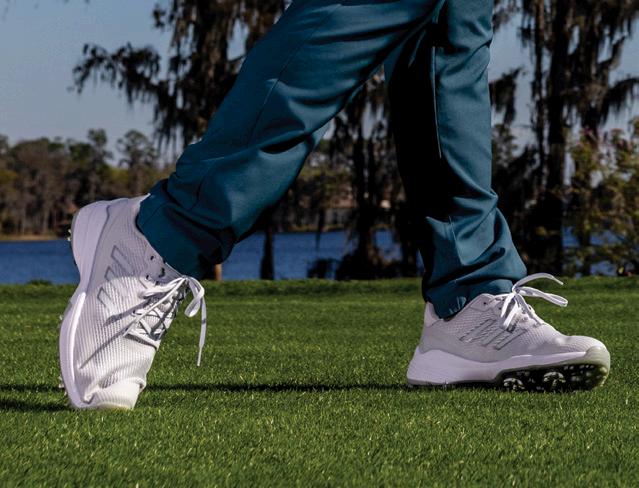
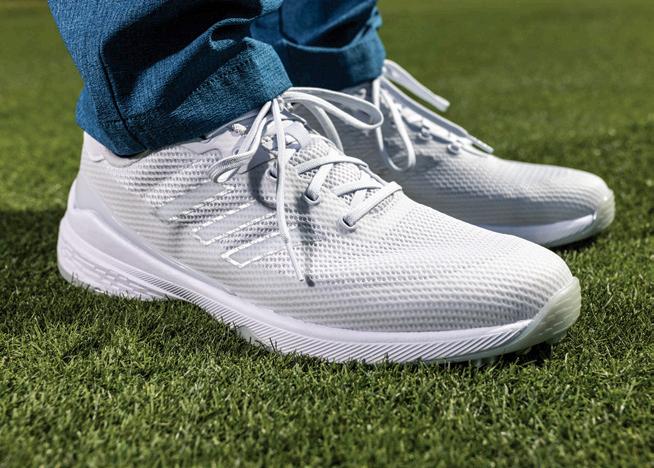

retailer
Available at adidas.ae or any a preferred adidas


















 by matt smith
by matt smith
 by matt smith
by matt smith











 photograph by jacob sjöman
photograph by jacob sjöman

 By Alex Myers
By Alex Myers






































 By Matt Smith
By Matt Smith

 BY MATT SMITH
BY MATT SMITH



























































































 GET EXCITED Thomas, a player who relishes pressure, celebrates during the 2021 Ryder Cup.
GET EXCITED Thomas, a player who relishes pressure, celebrates during the 2021 Ryder Cup.













 BY ROLAND MERULLO
BY ROLAND MERULLO
 ILLUSTRATIONS BY WESLEY MERRITT
ILLUSTRATIONS BY WESLEY MERRITT





 Limited Edition Clock by David Galbraith
Photograph by Joachim Guay
Limited Edition Clock by David Galbraith
Photograph by Joachim Guay











 By CJ Nafus
By CJ Nafus




 SQUARE UP TO SHALLOW YOUR ANGLE OF ATTACK
SQUARE UP TO SHALLOW YOUR ANGLE OF ATTACK









































































































































































































































 —WITH E MICHAEL JOHNSON
—WITH E MICHAEL JOHNSON








